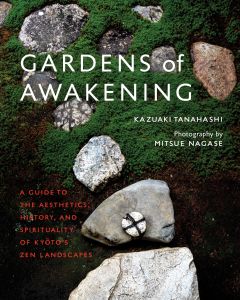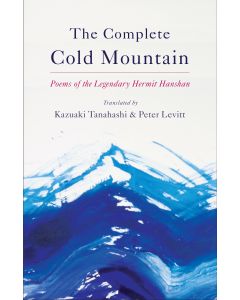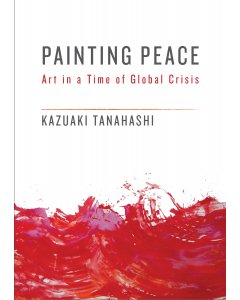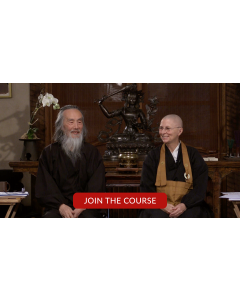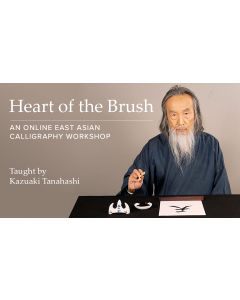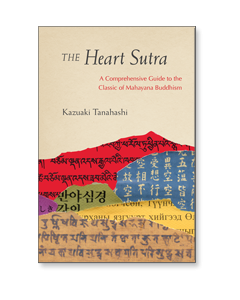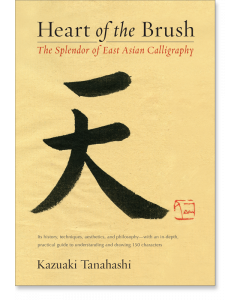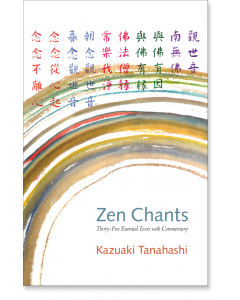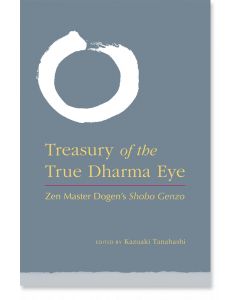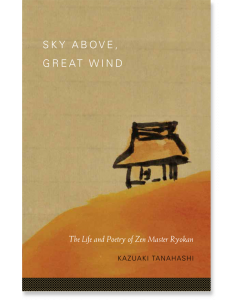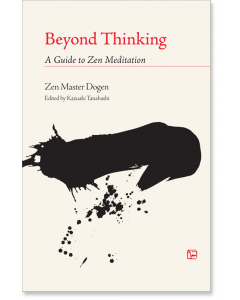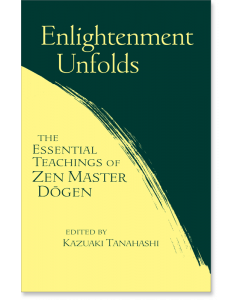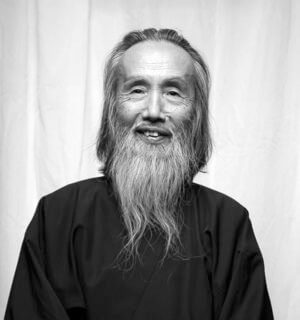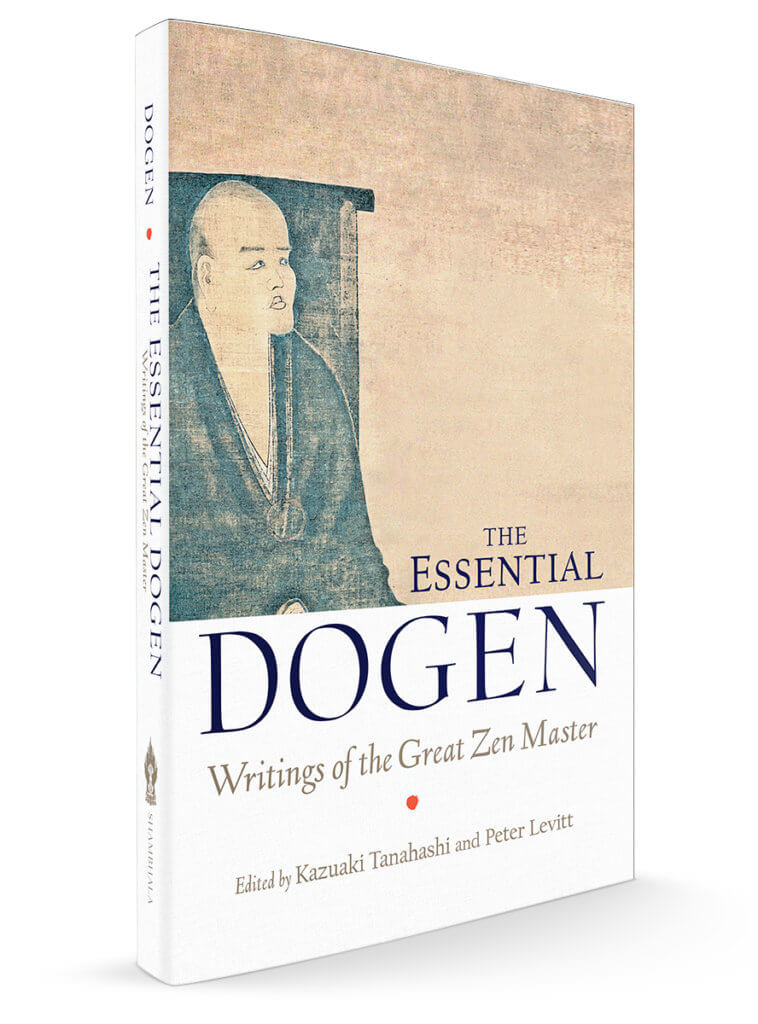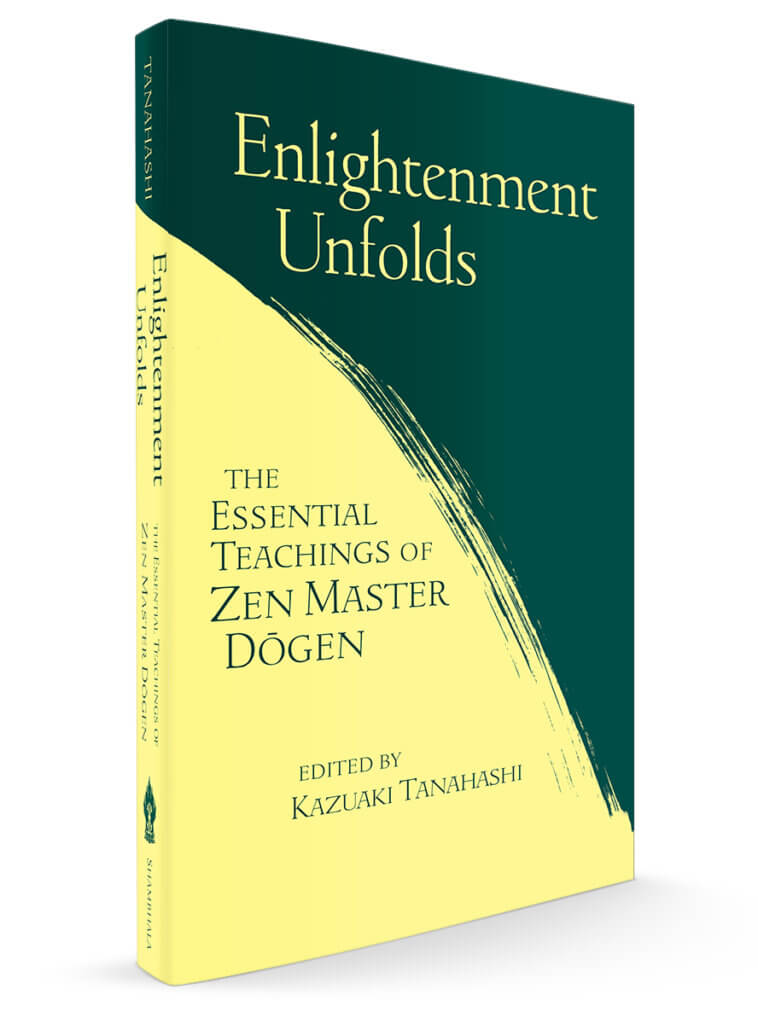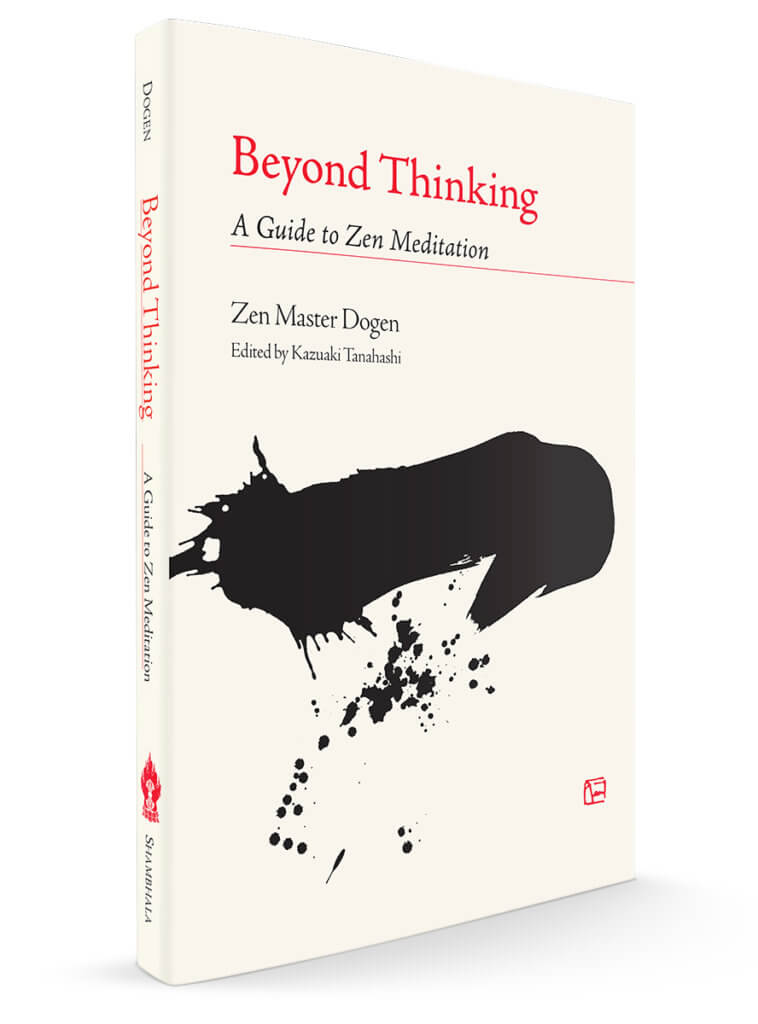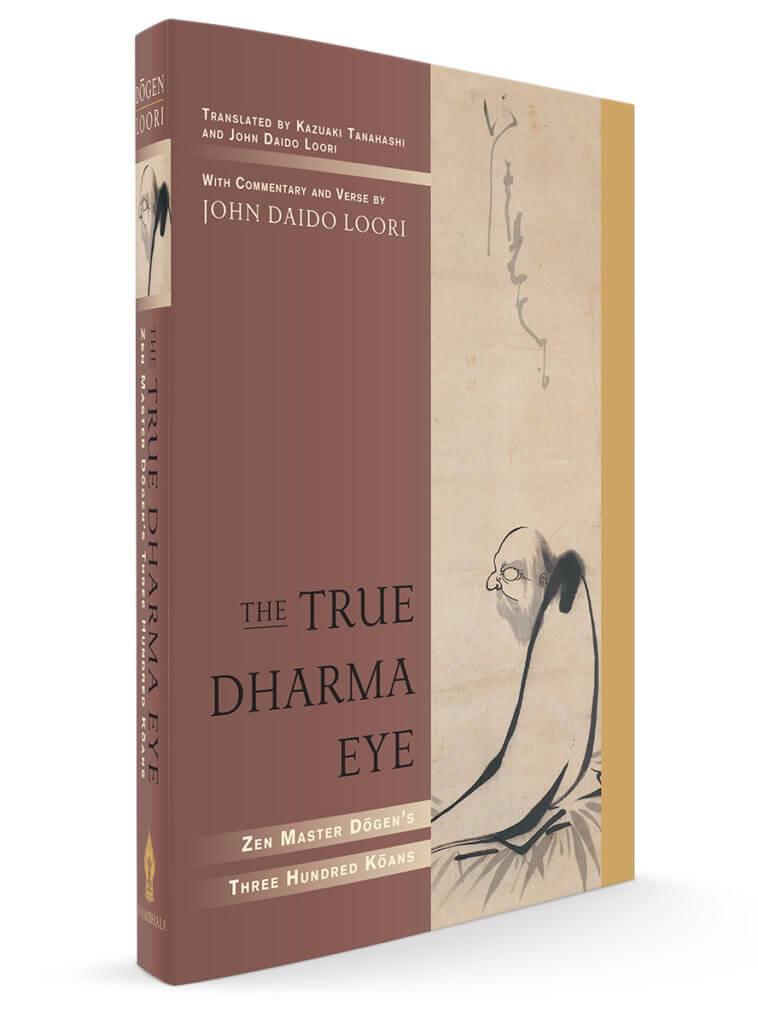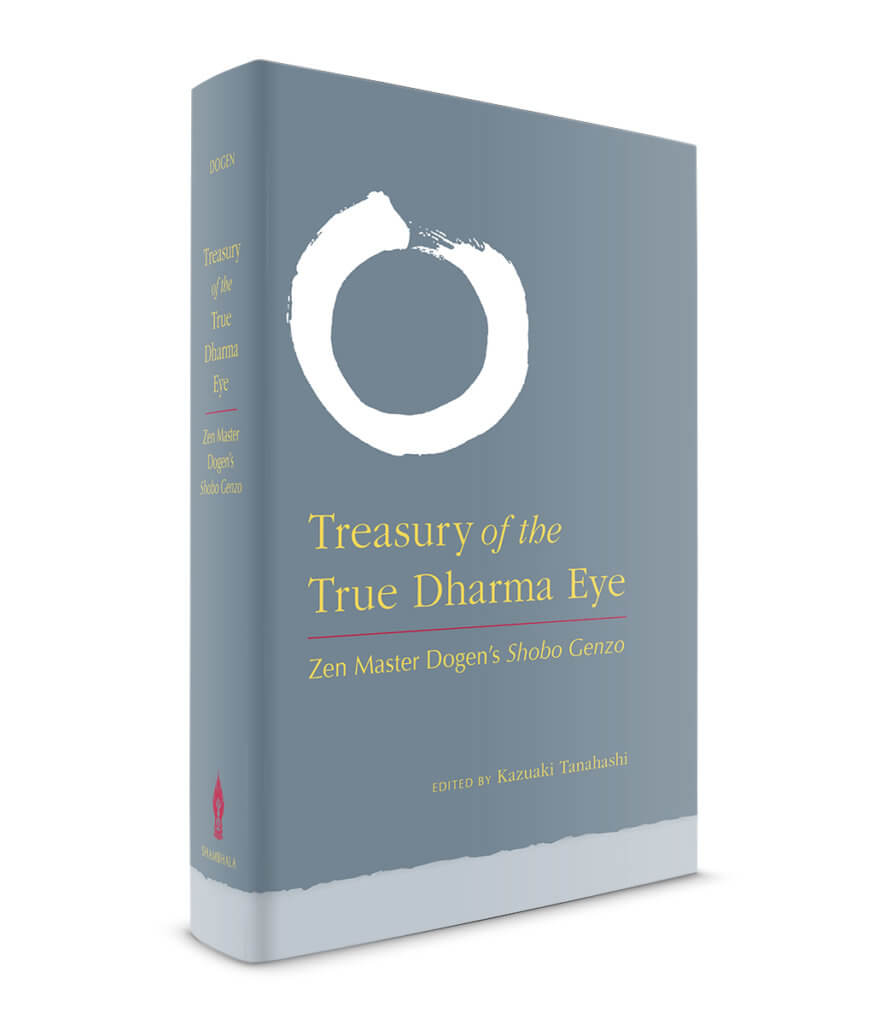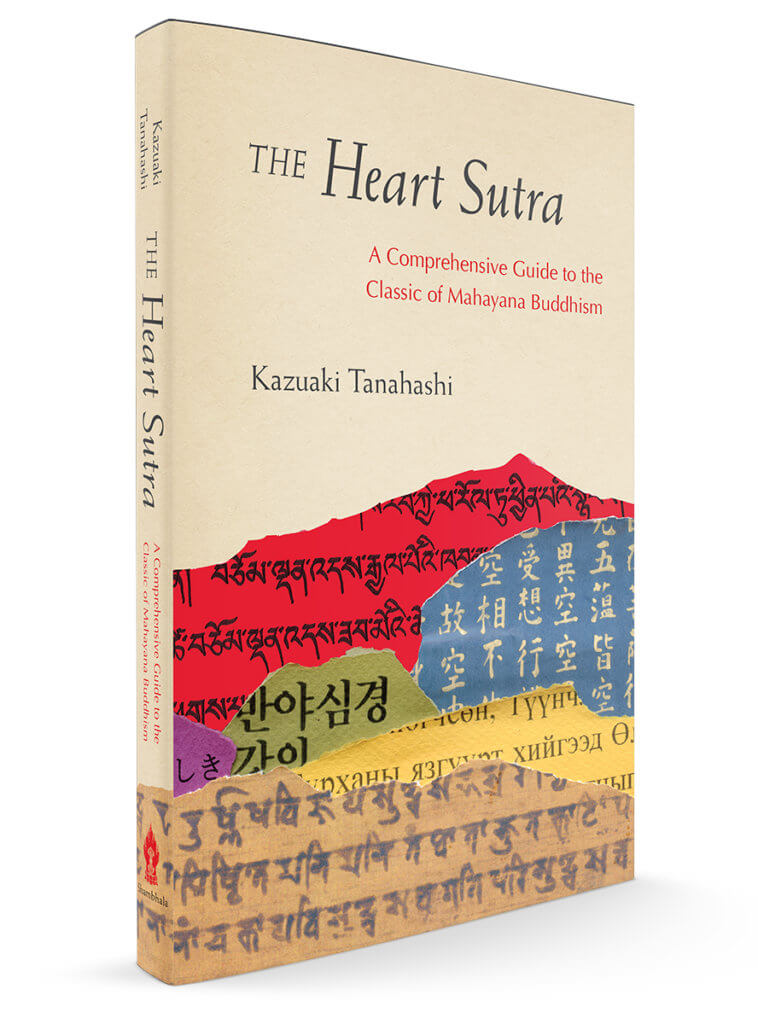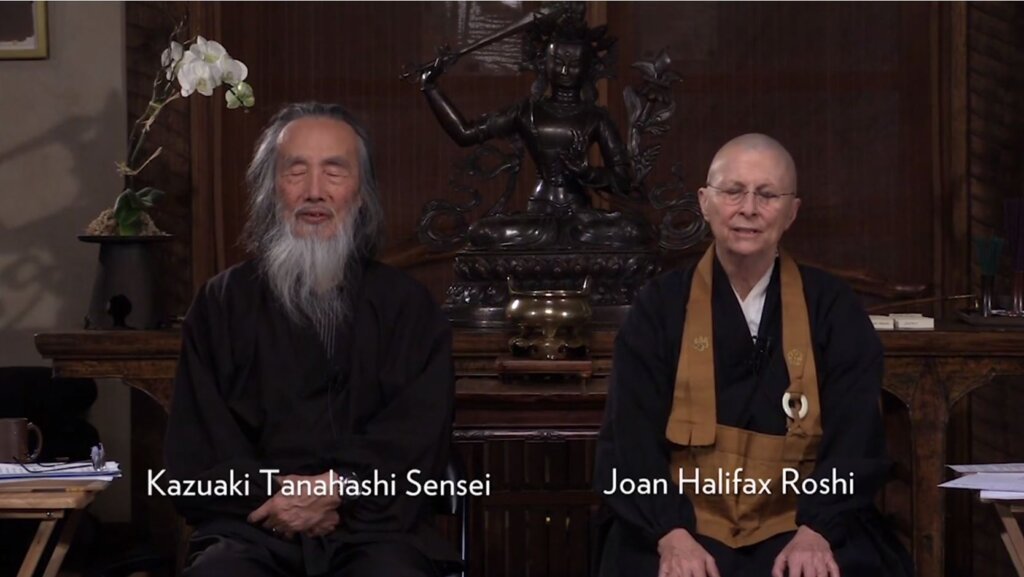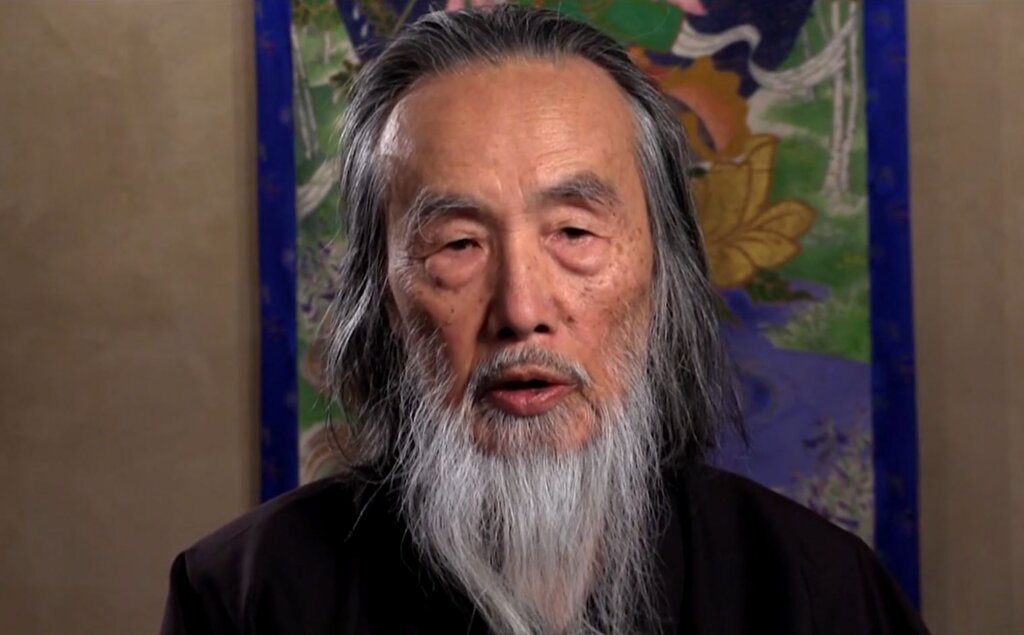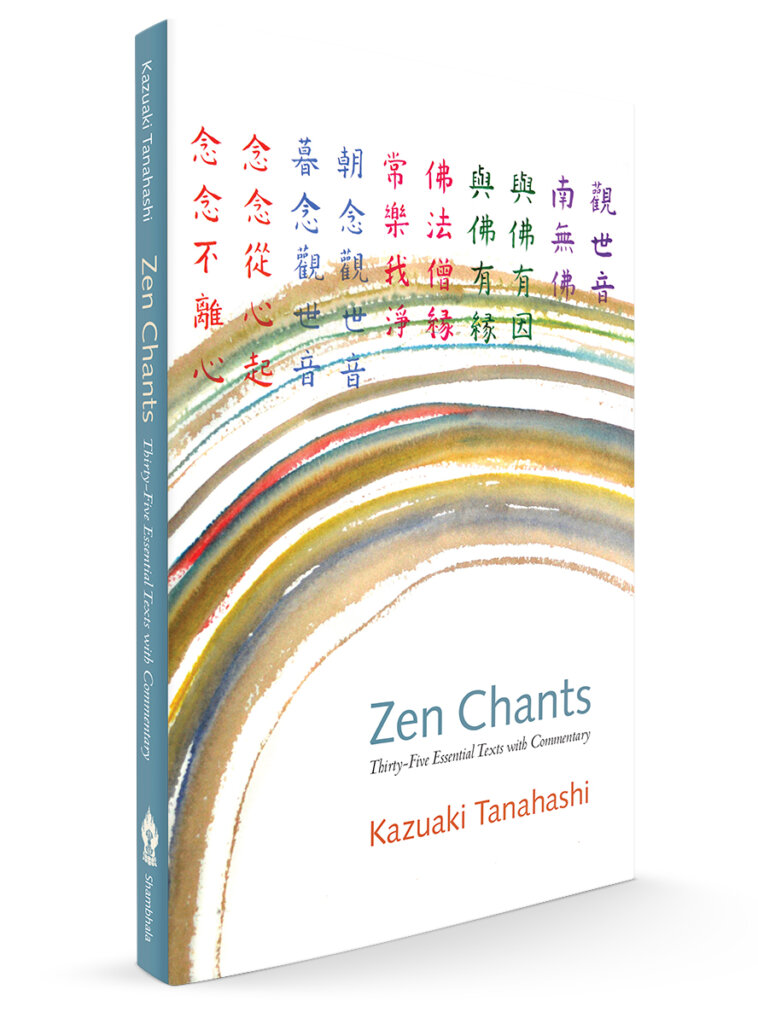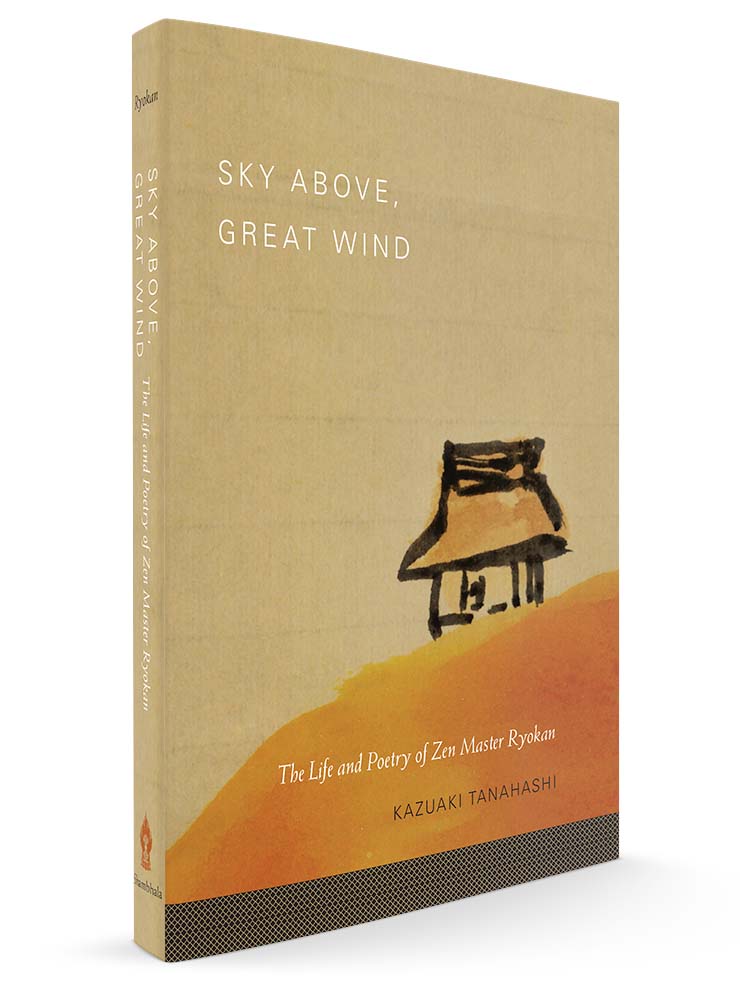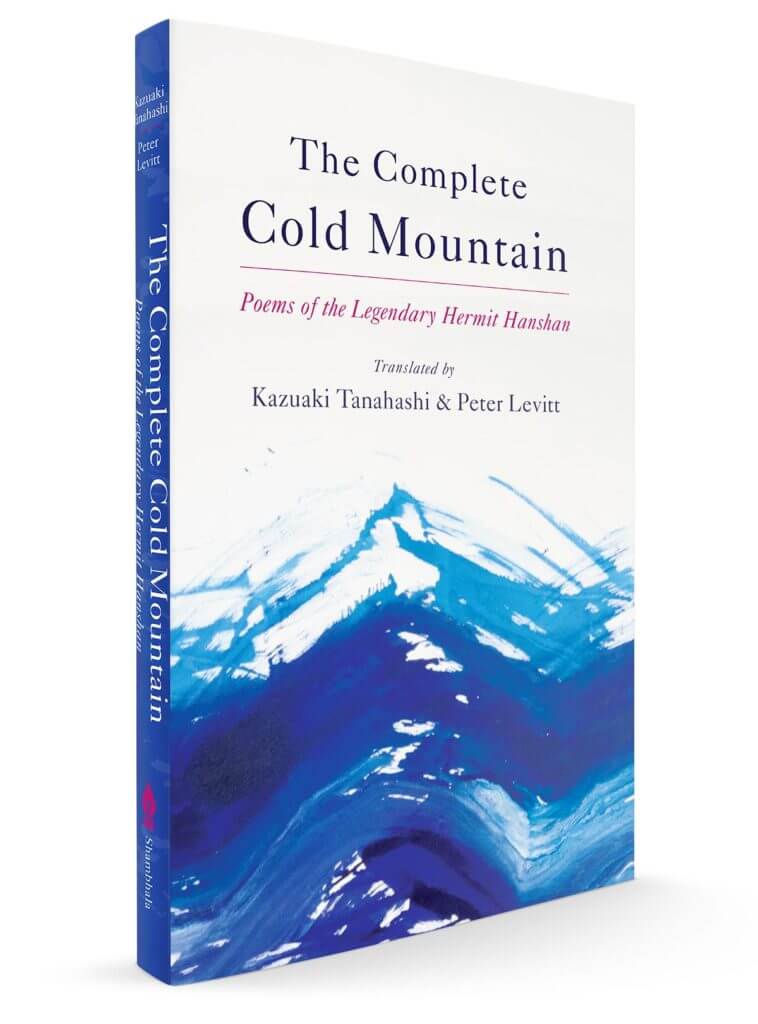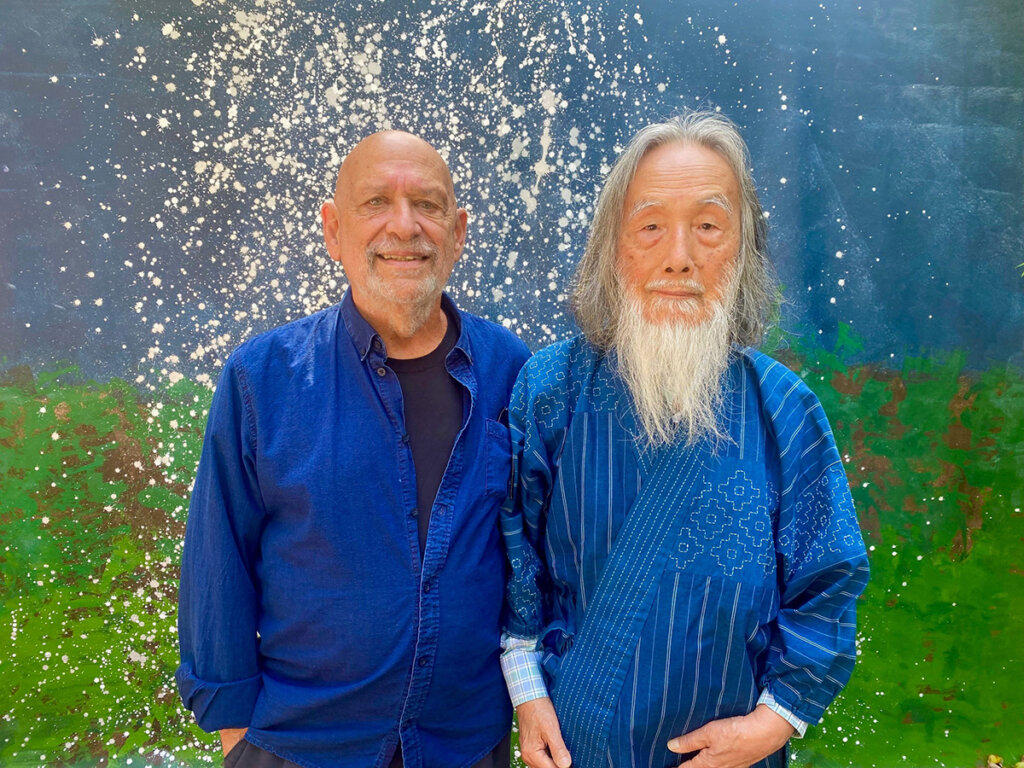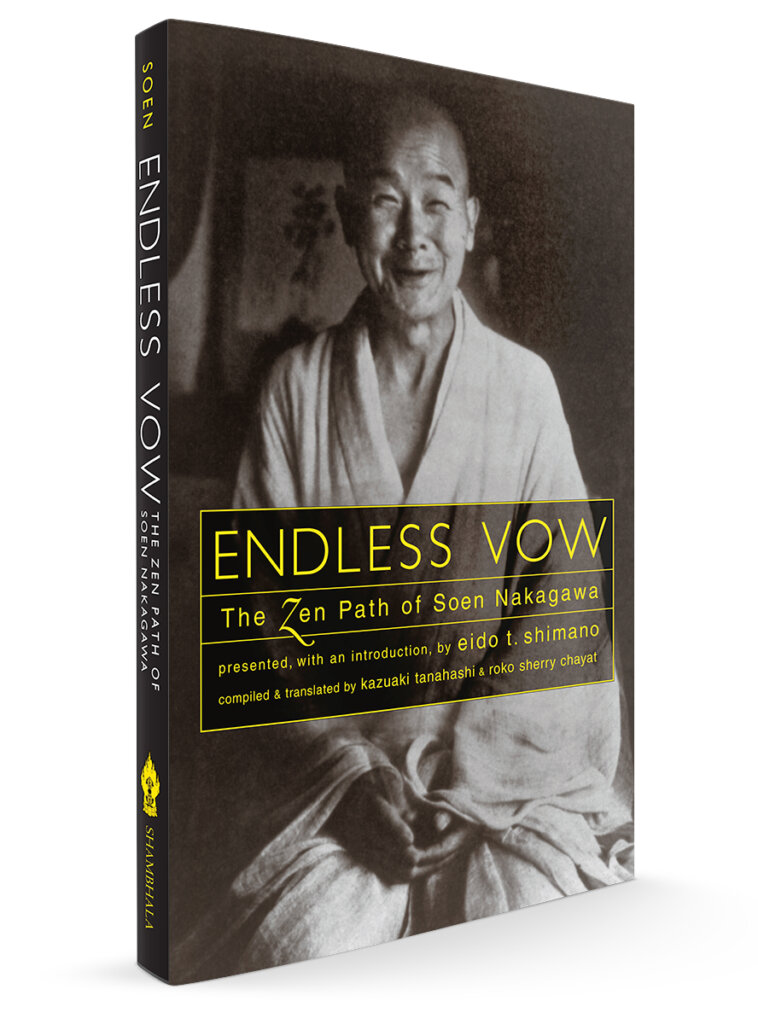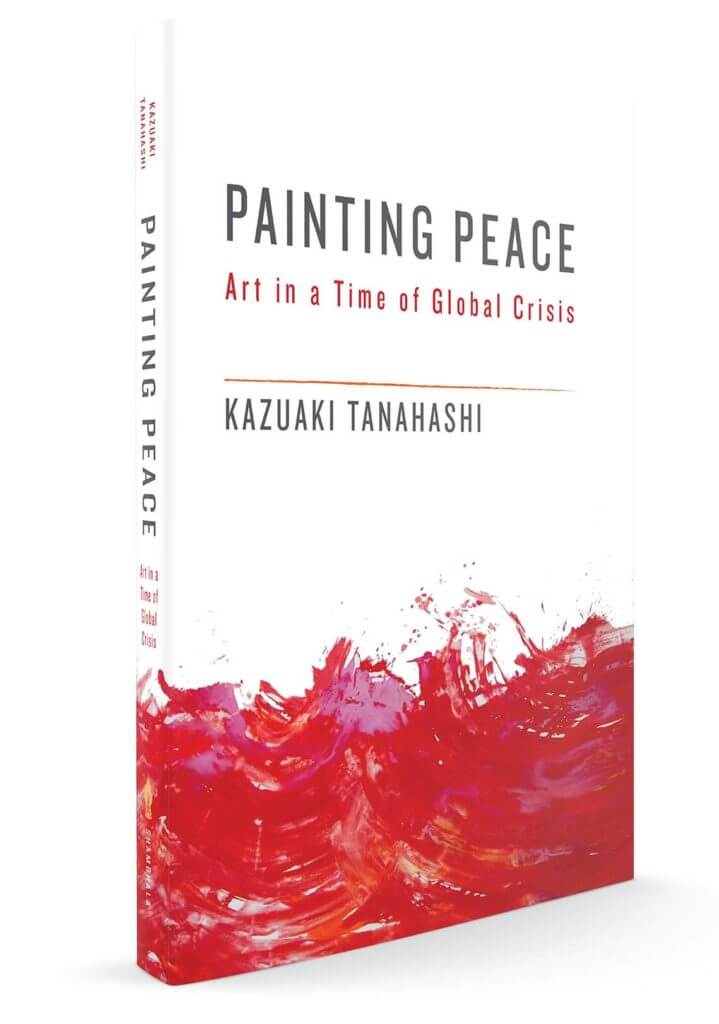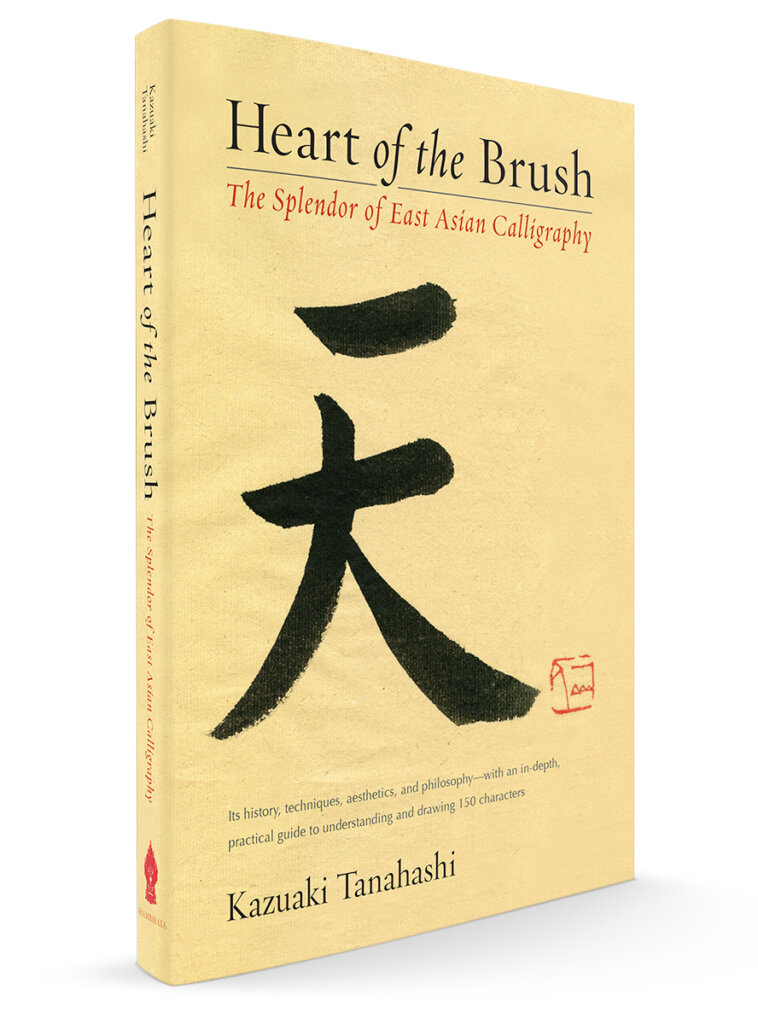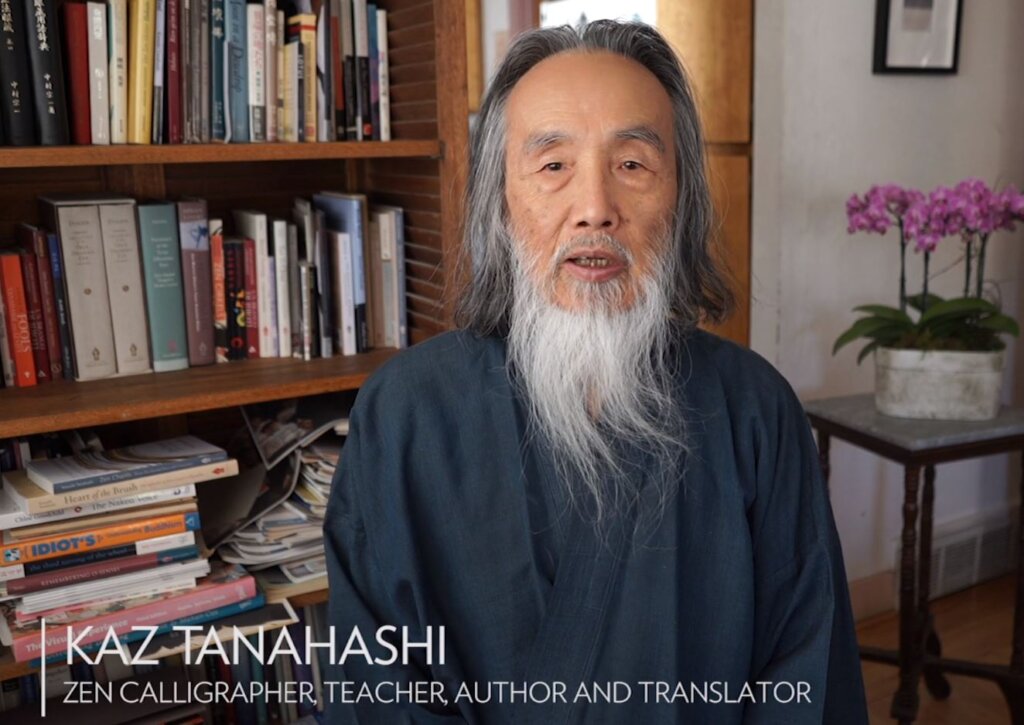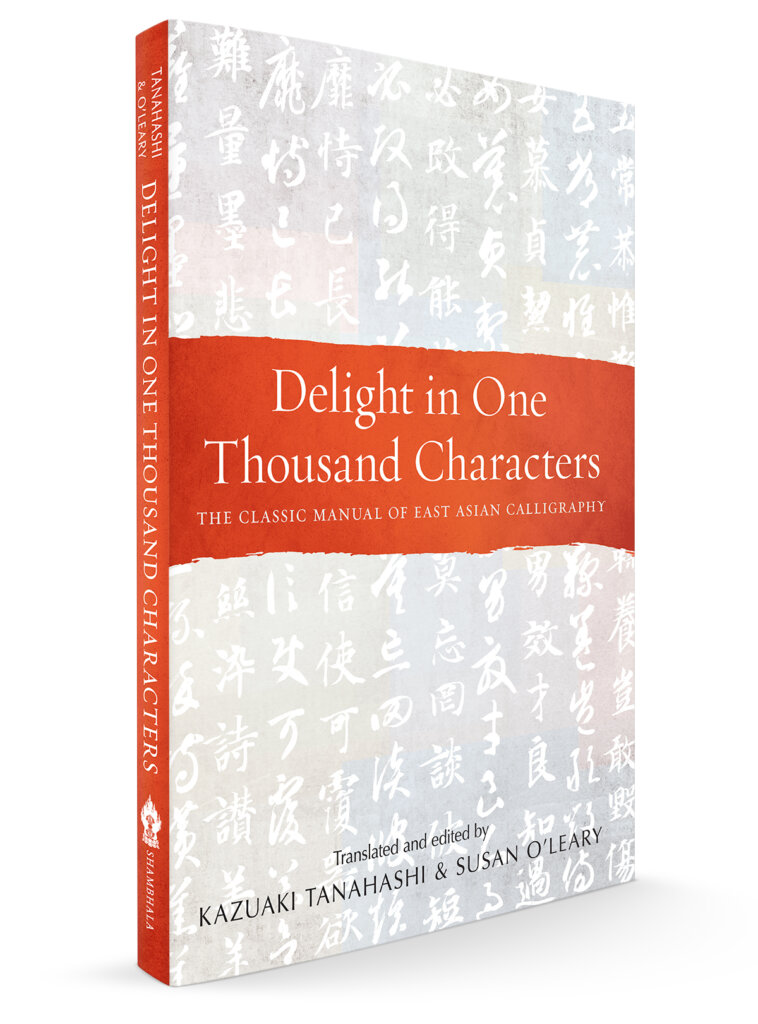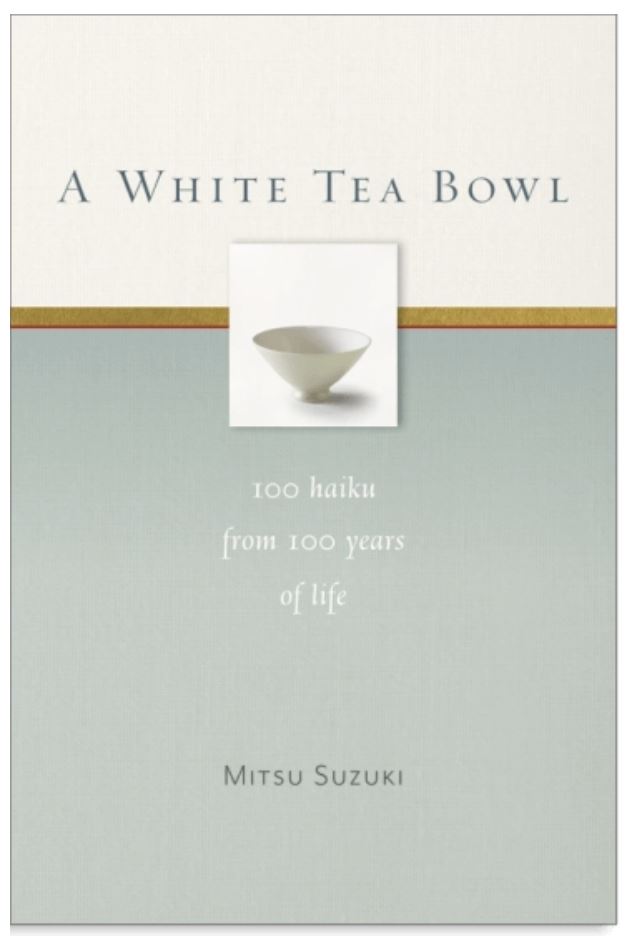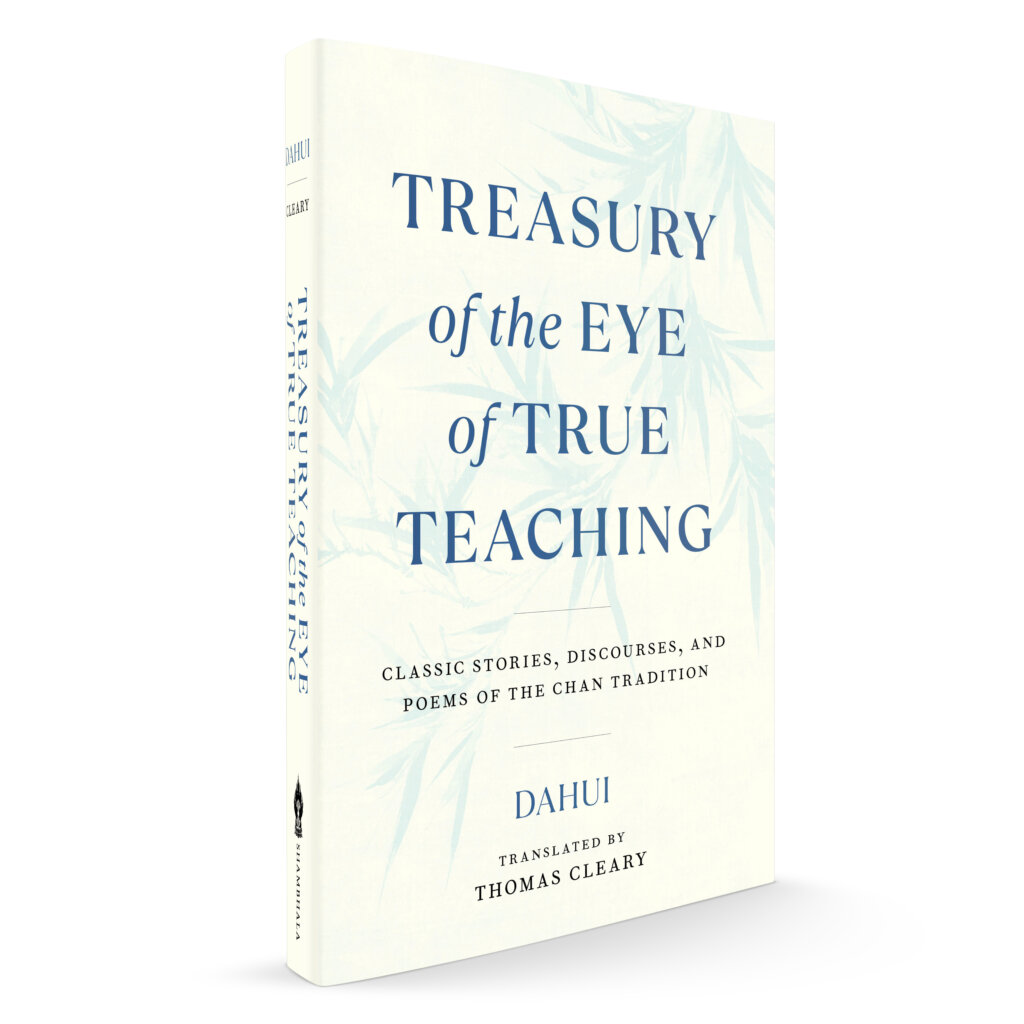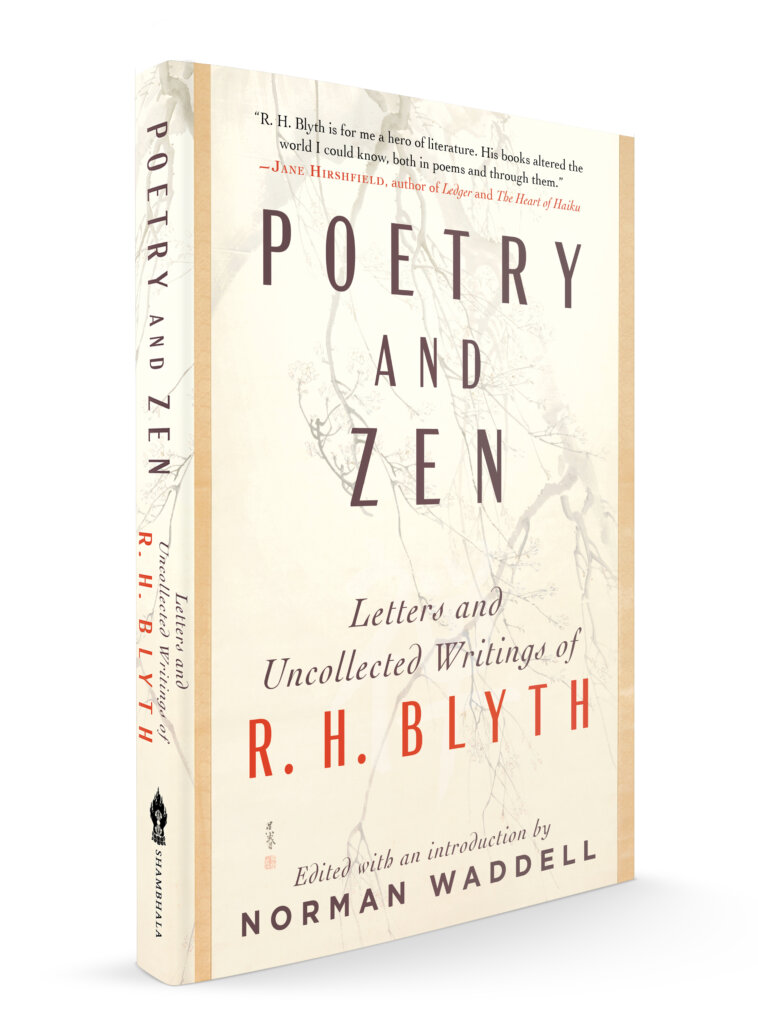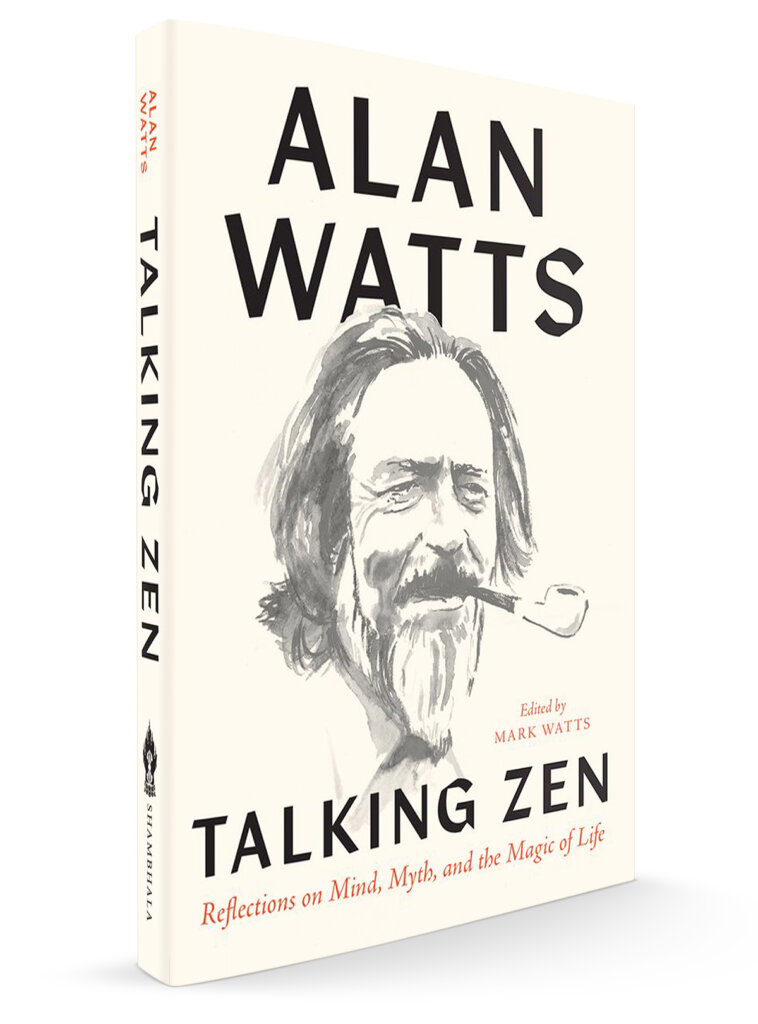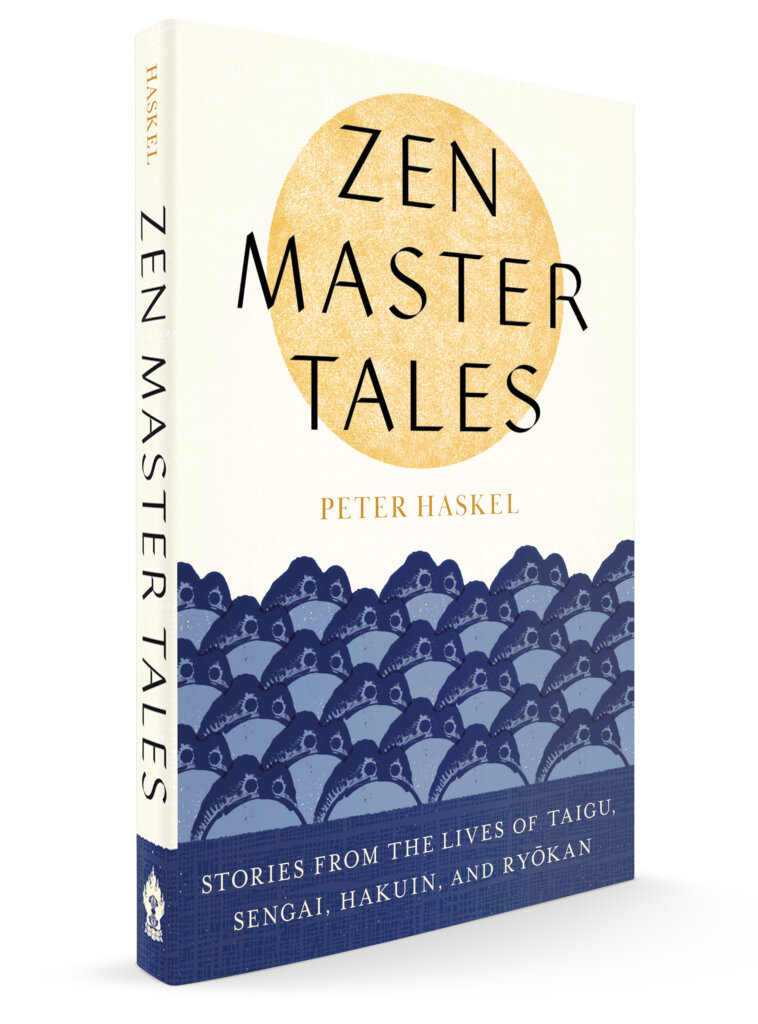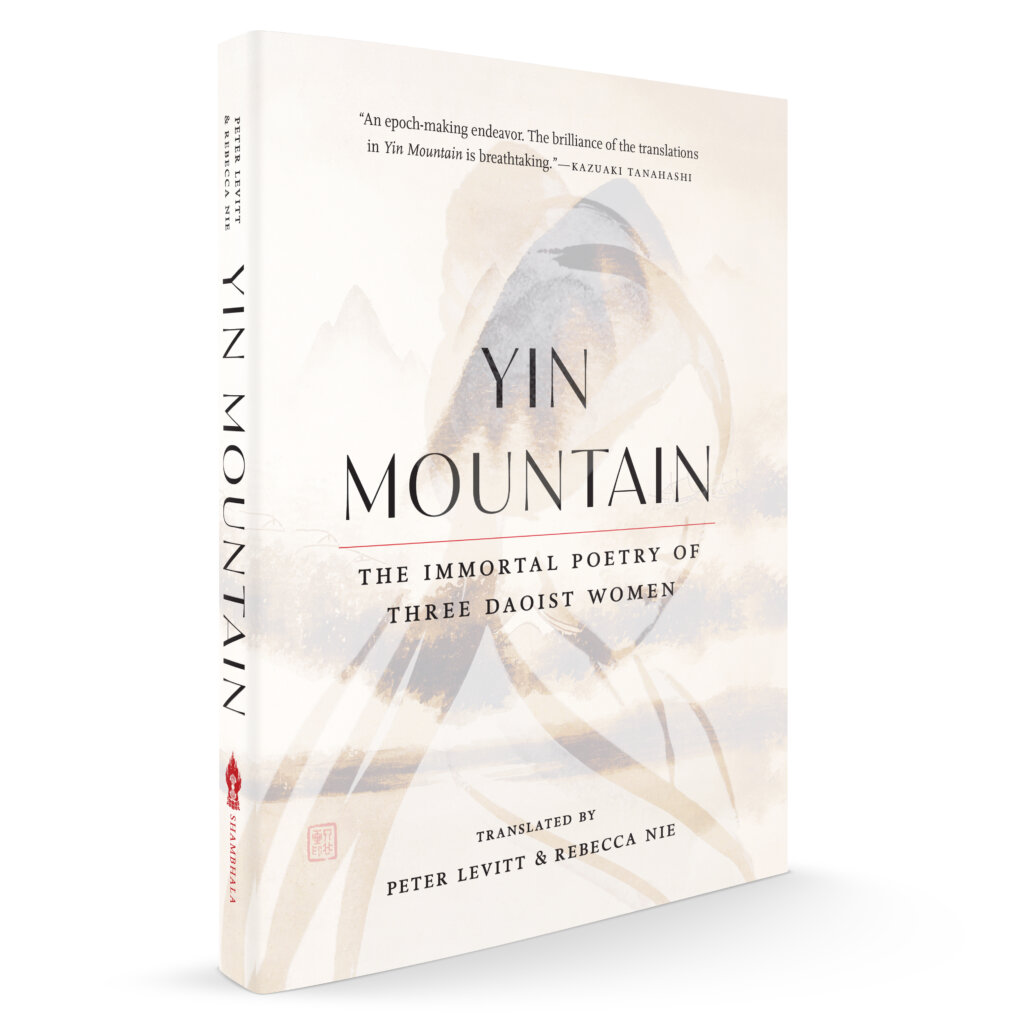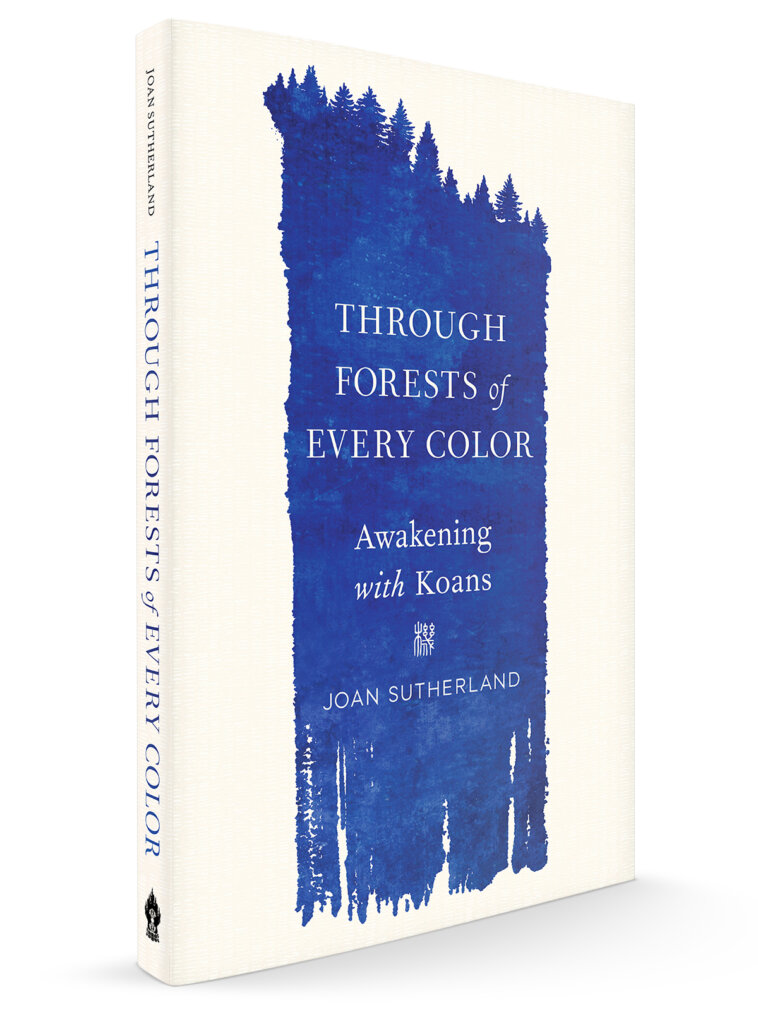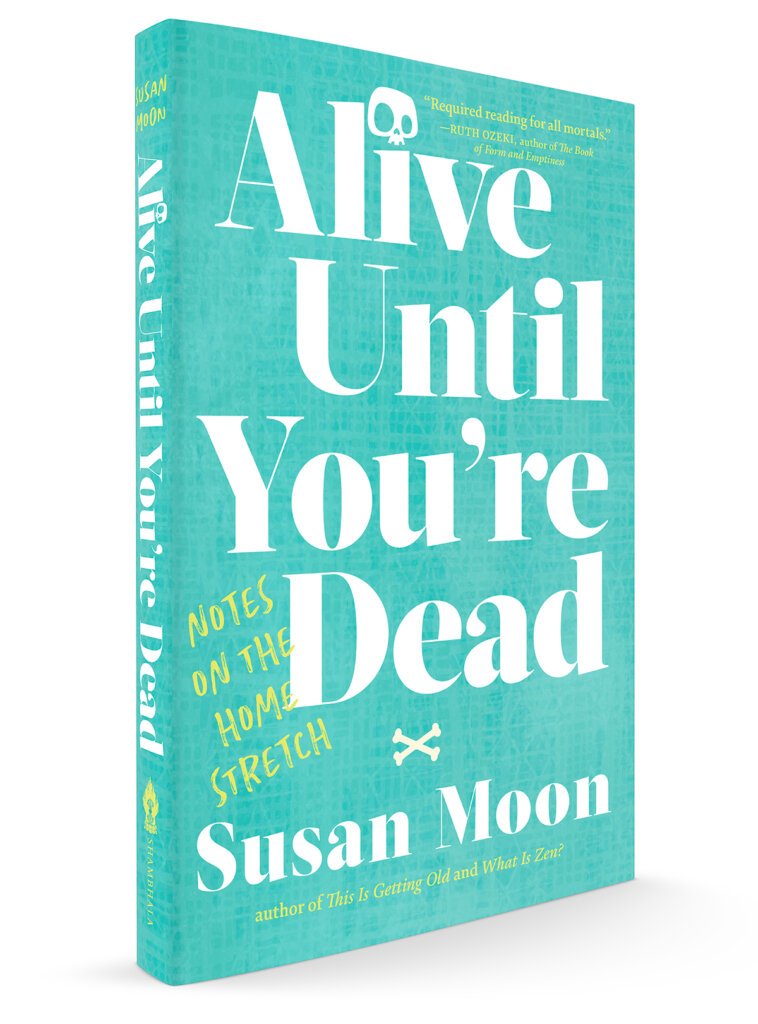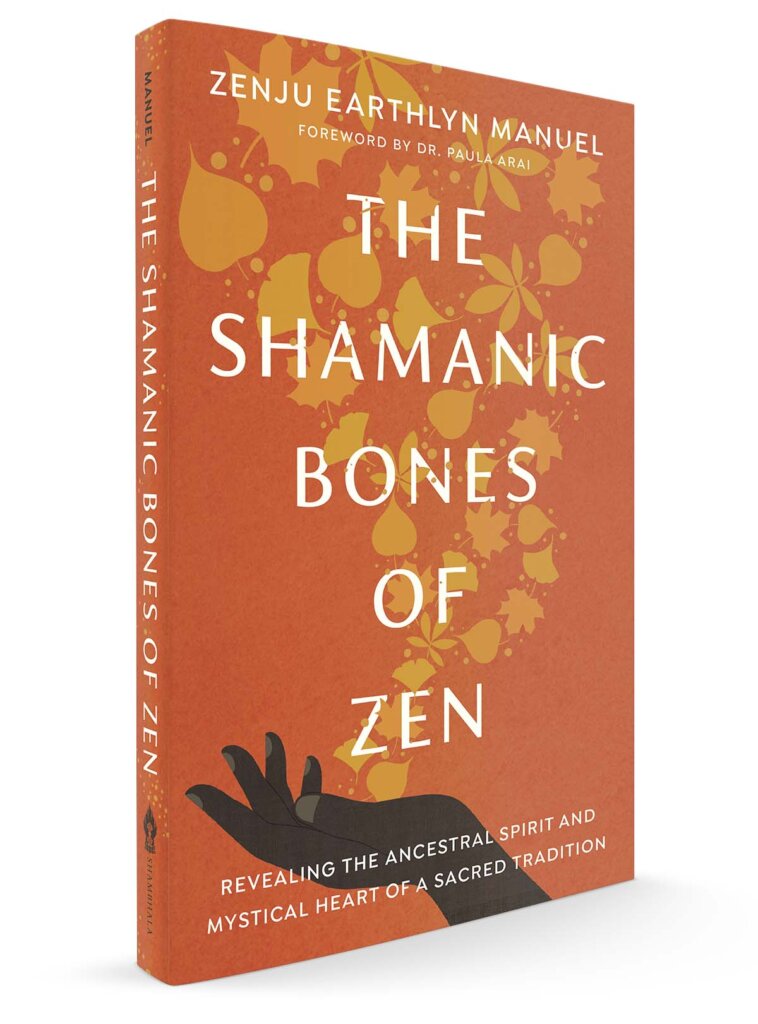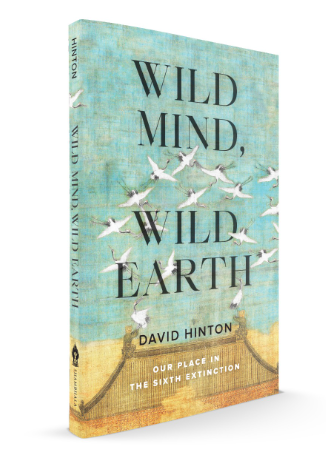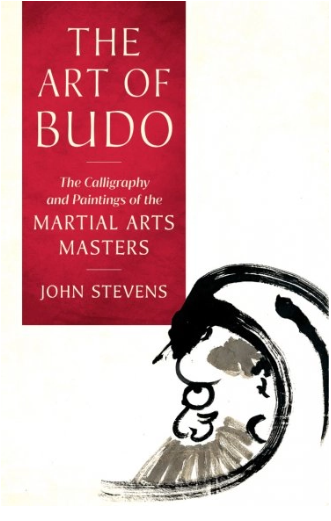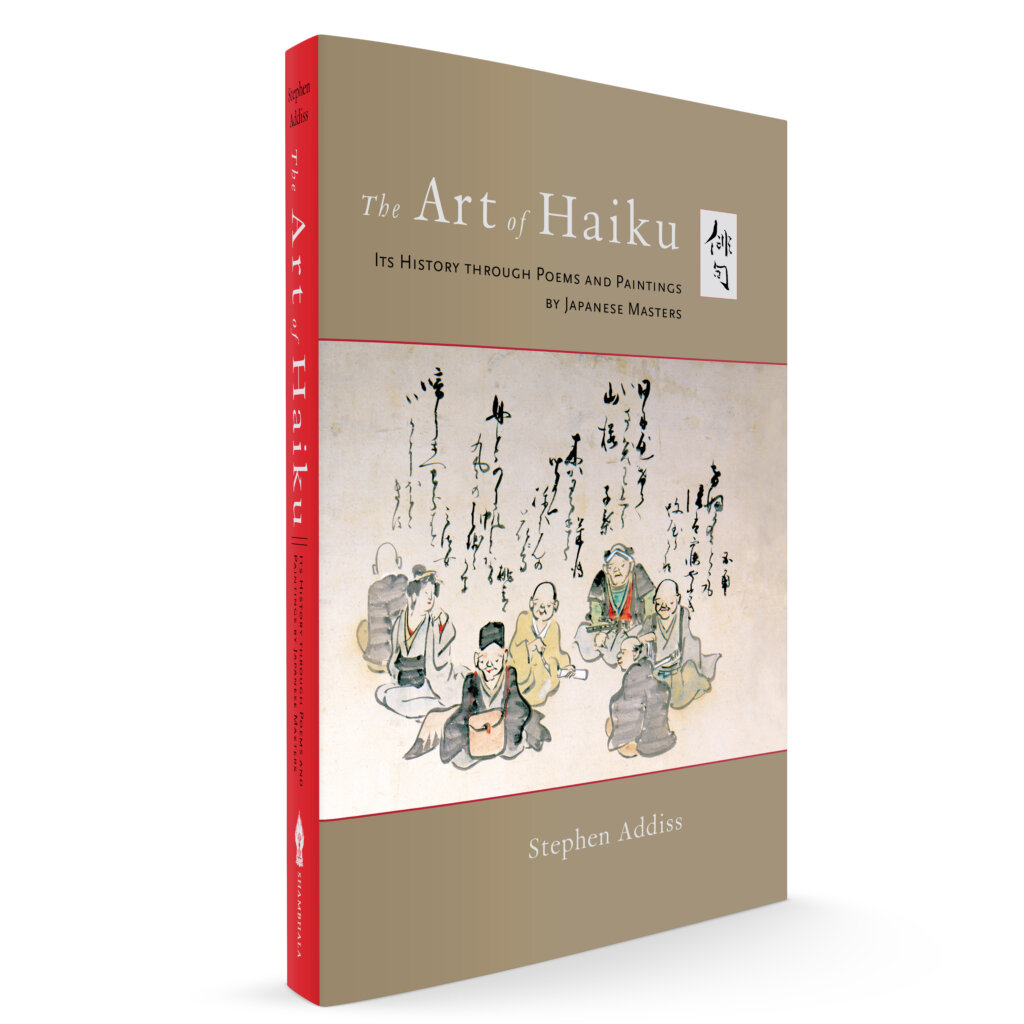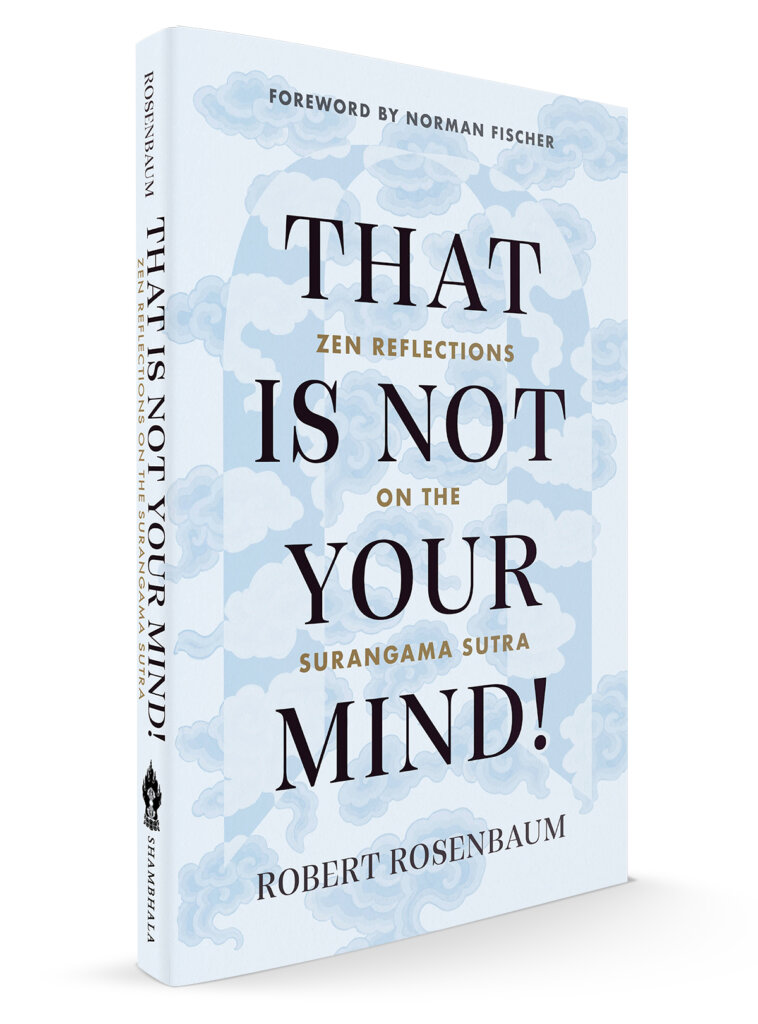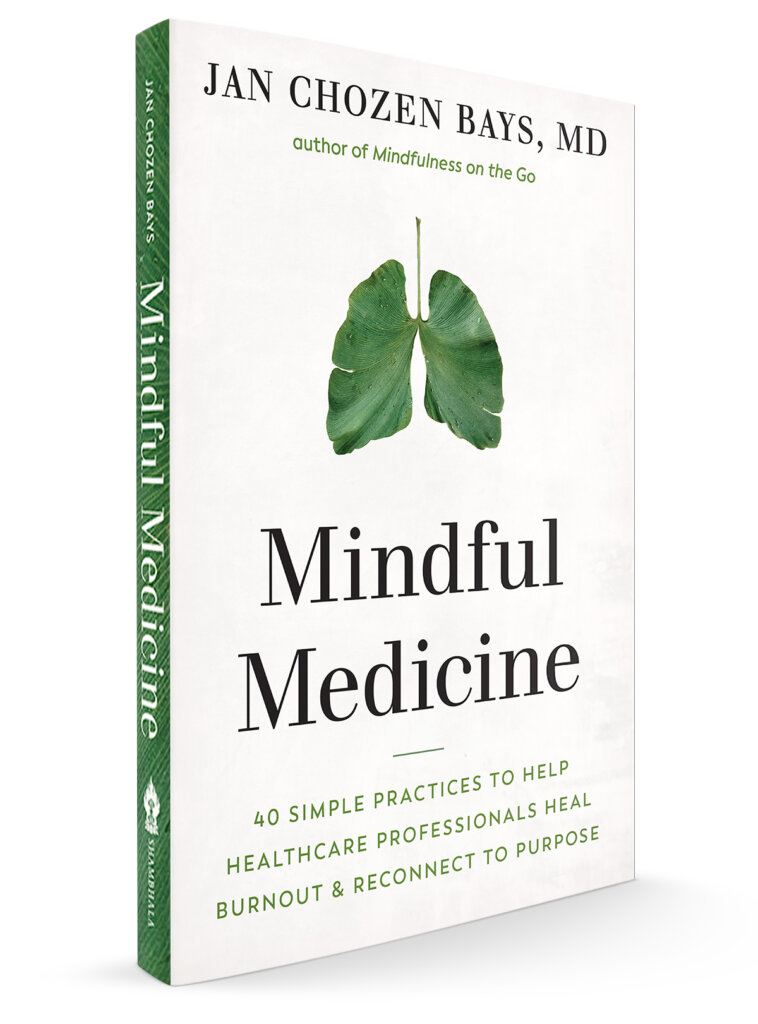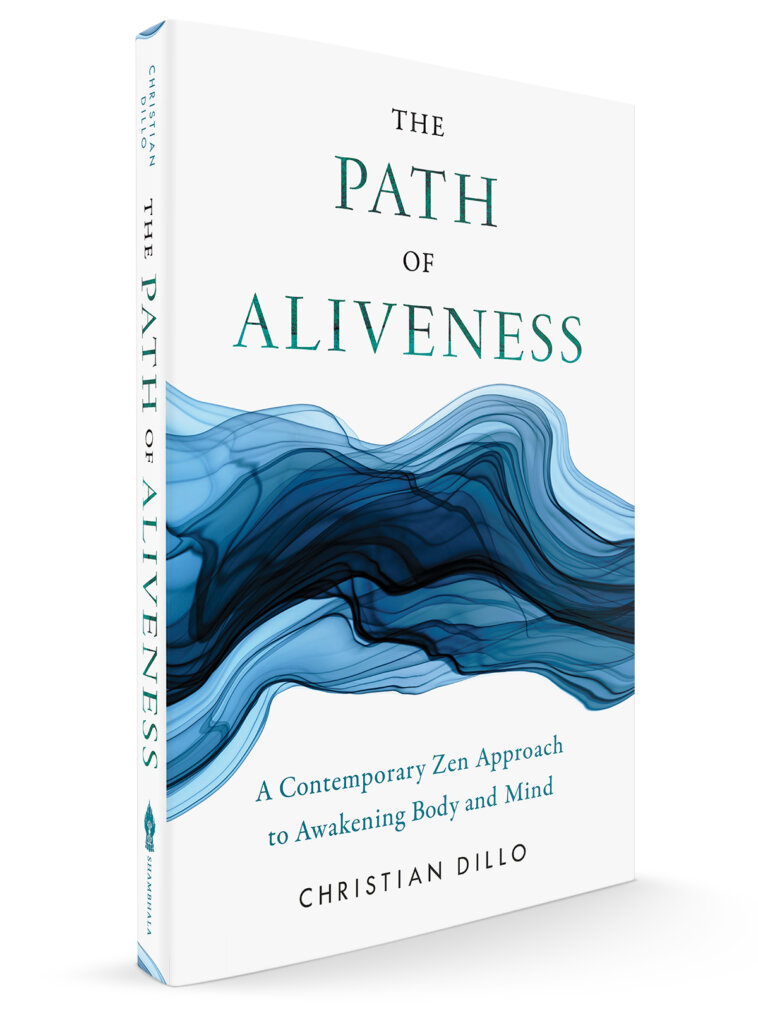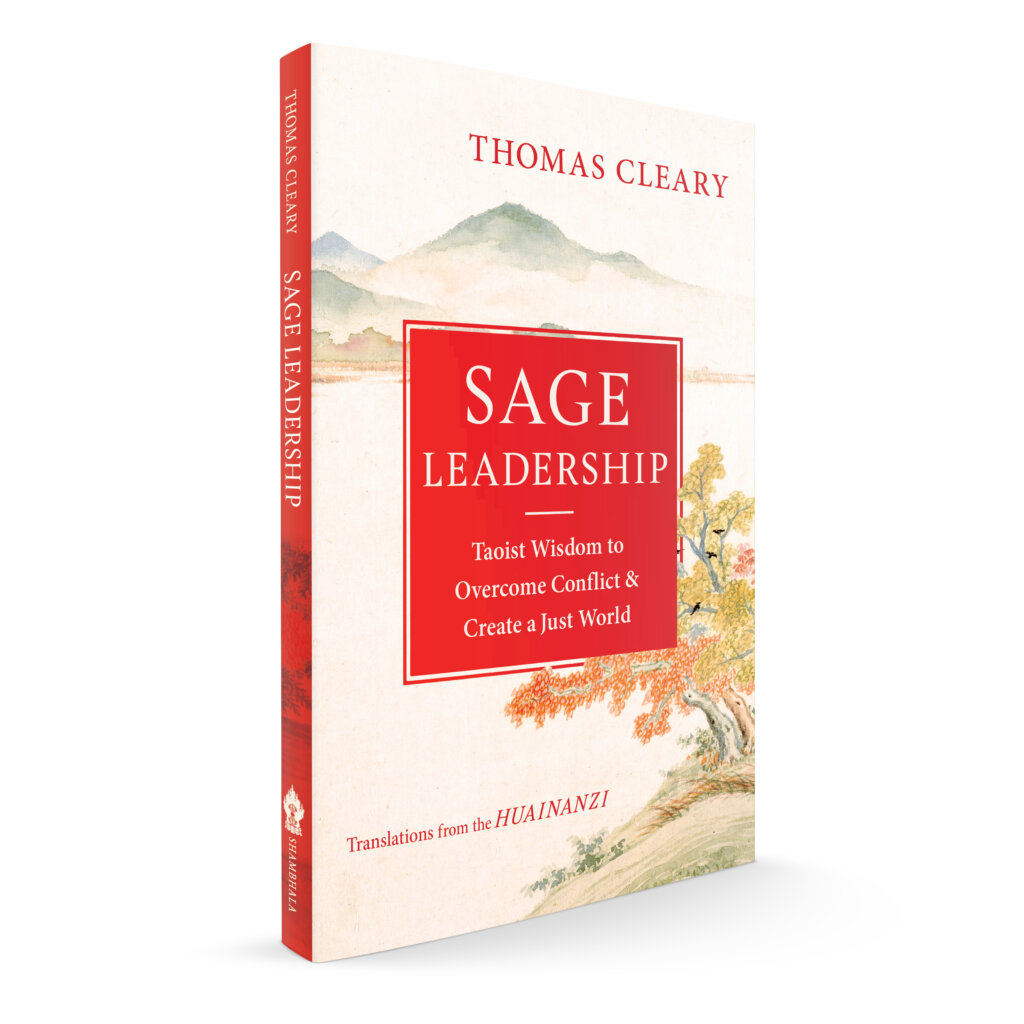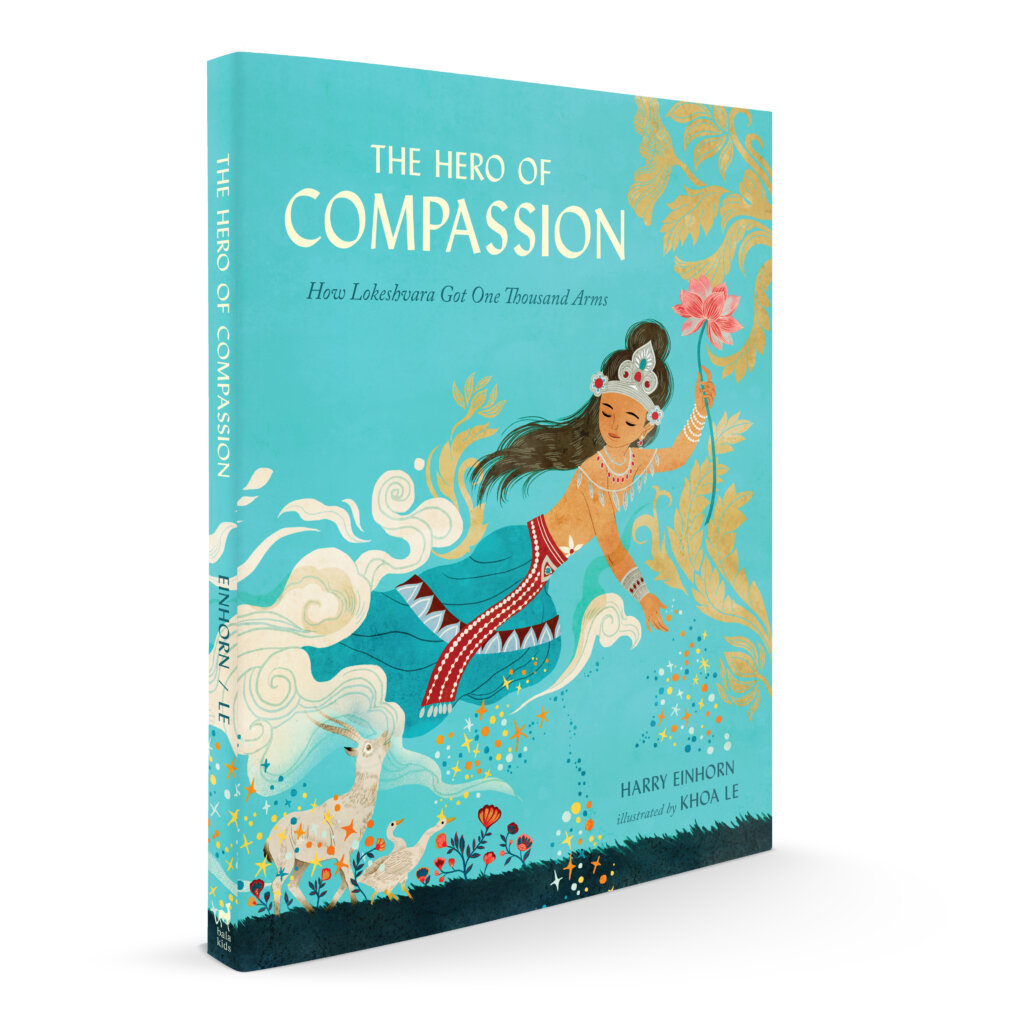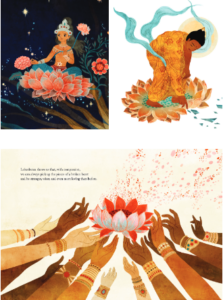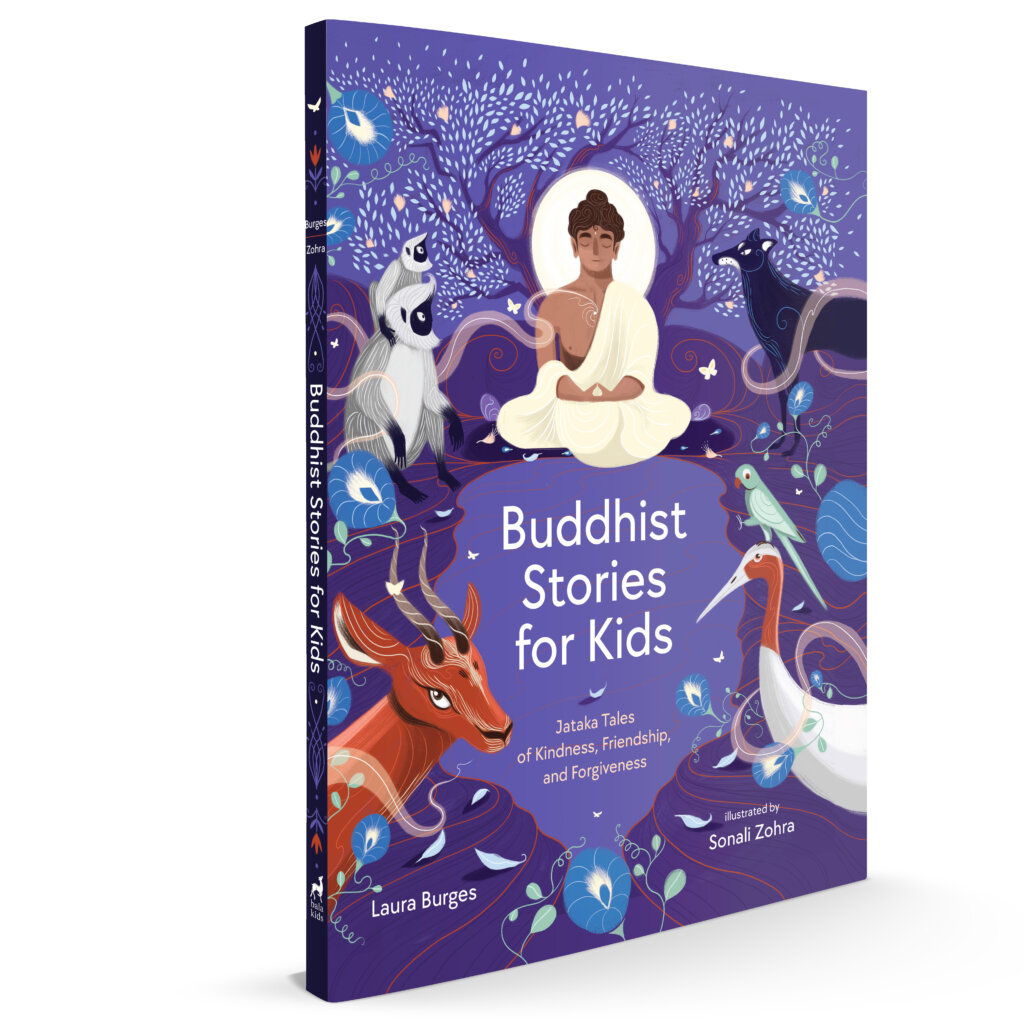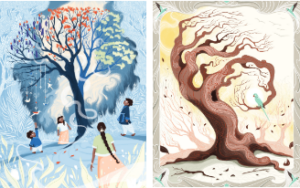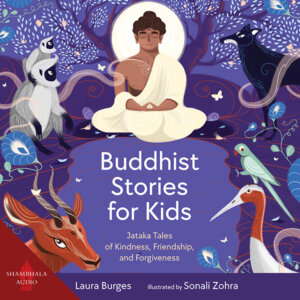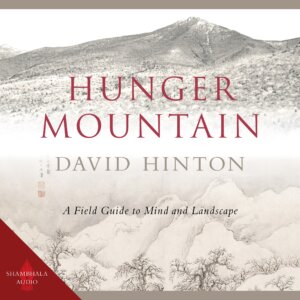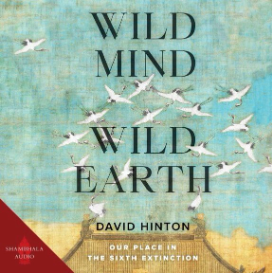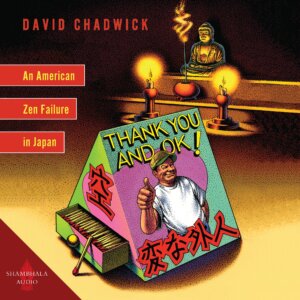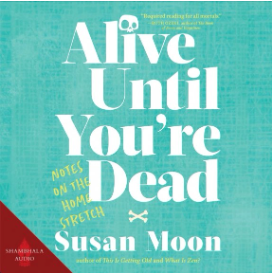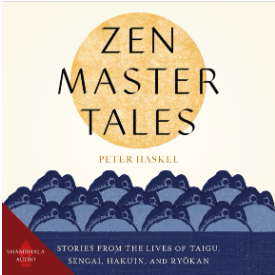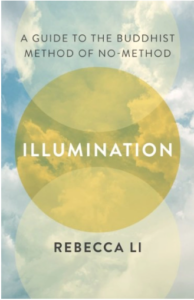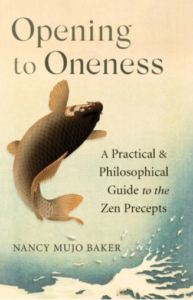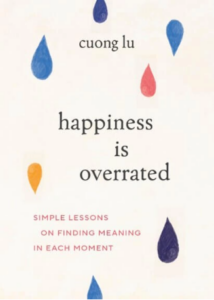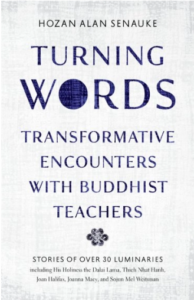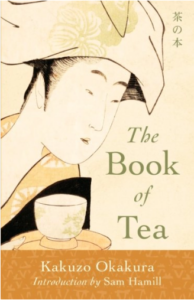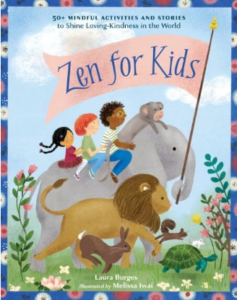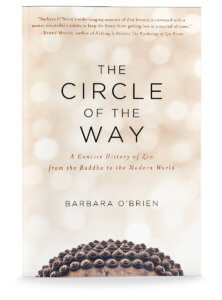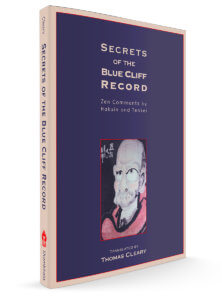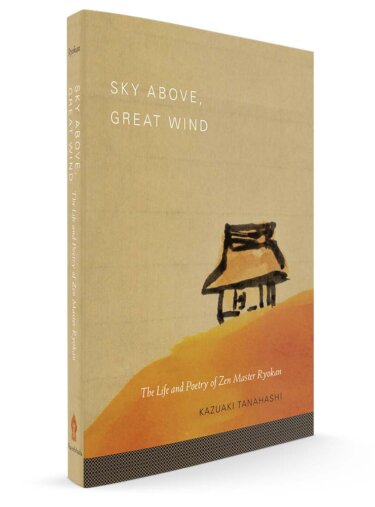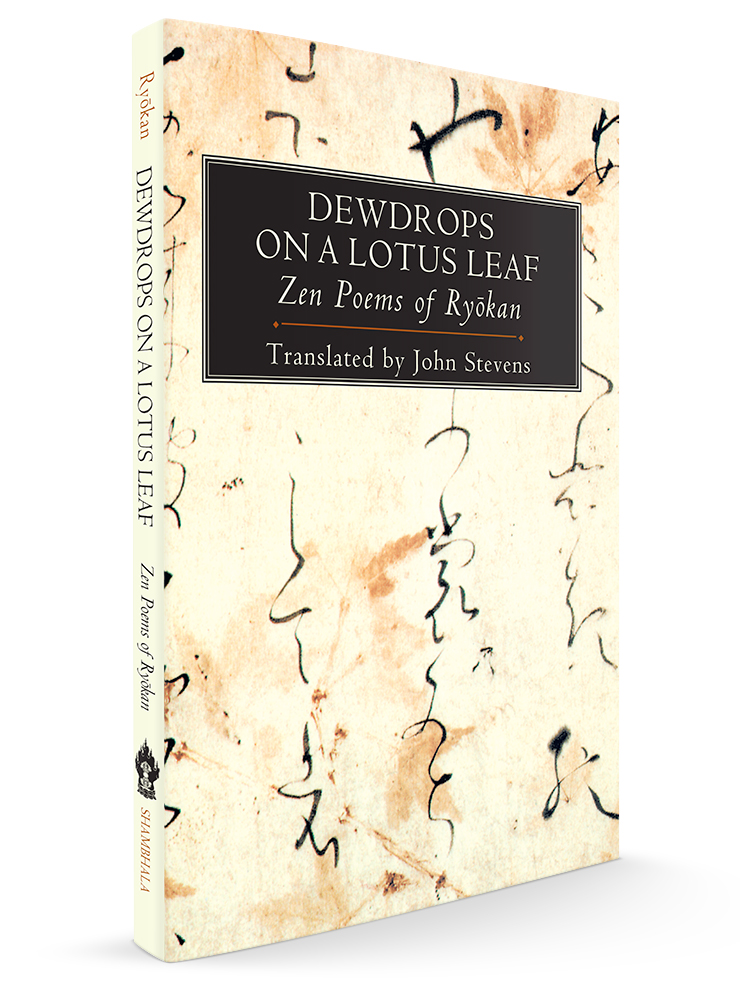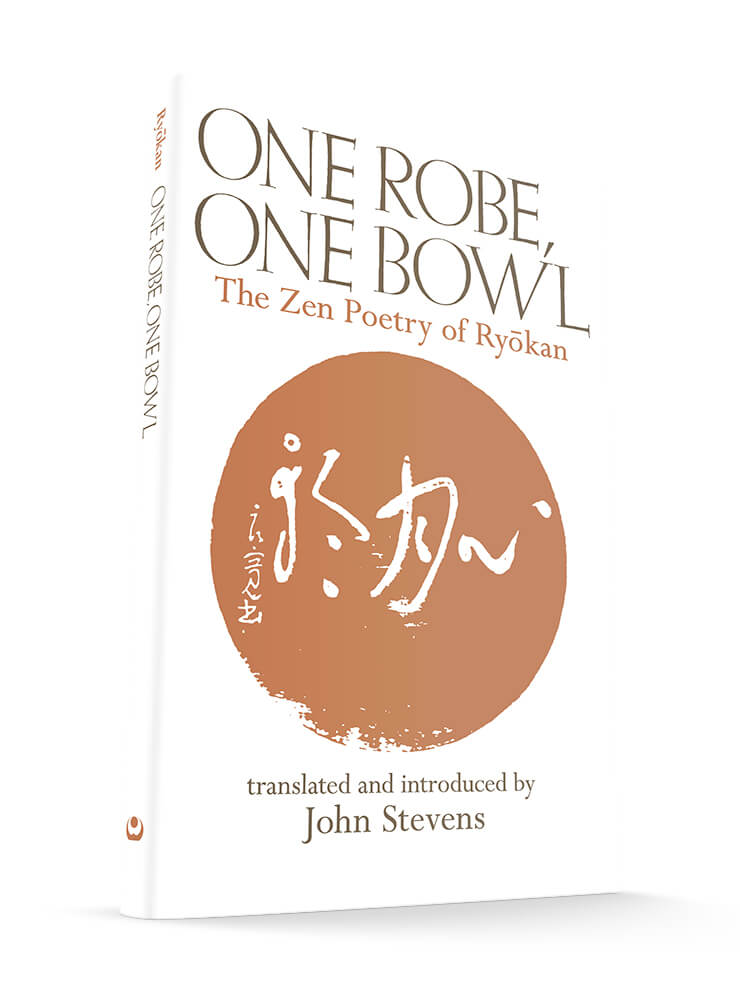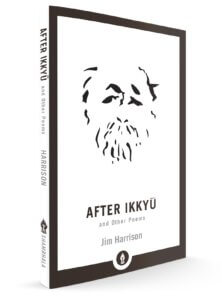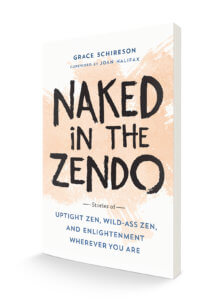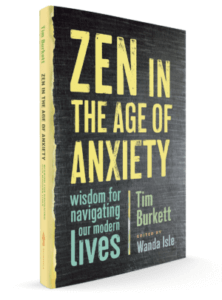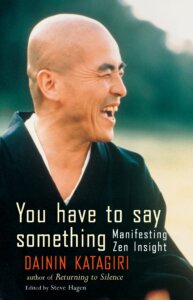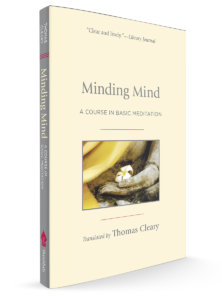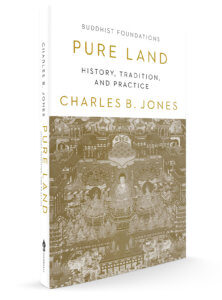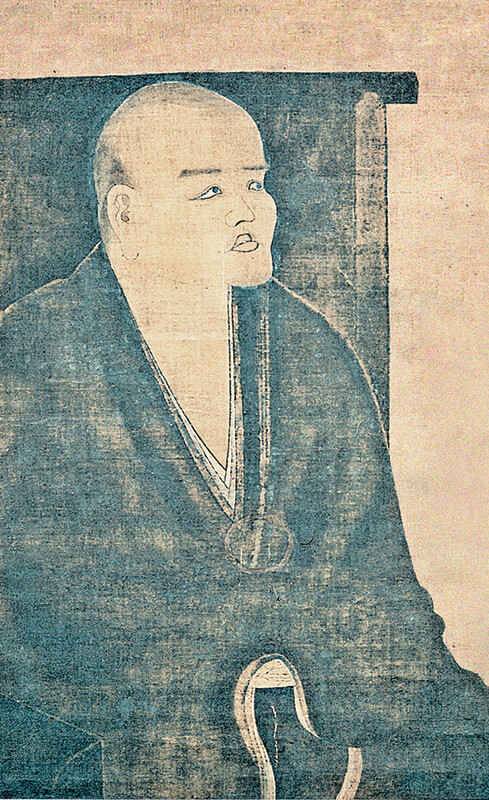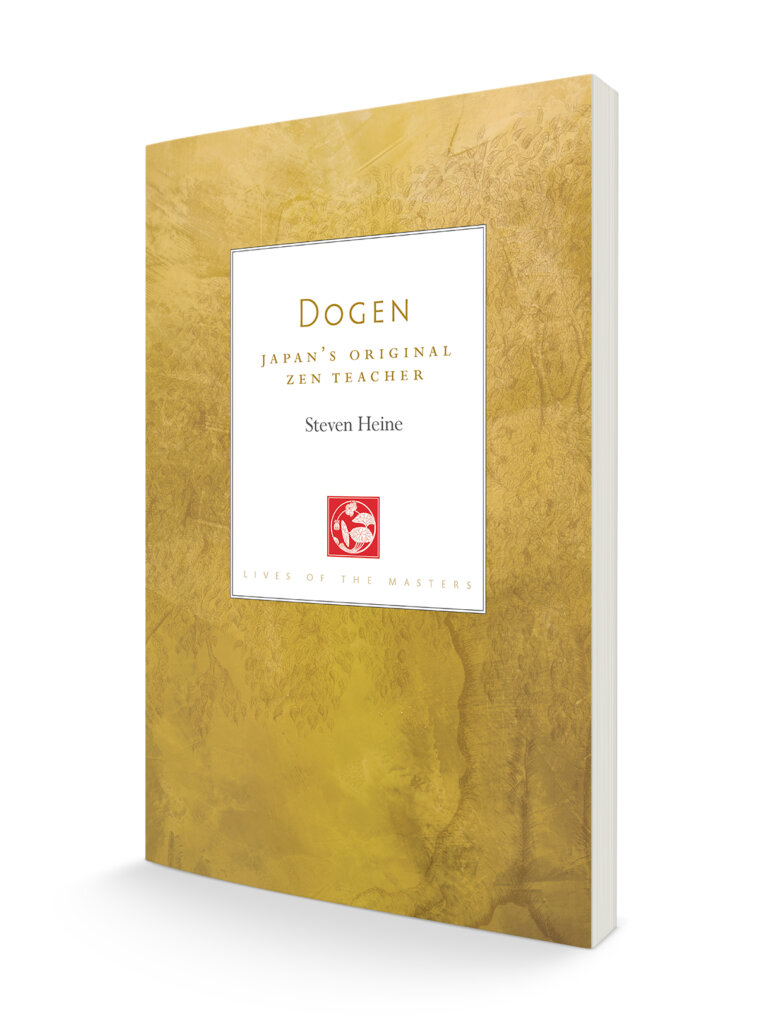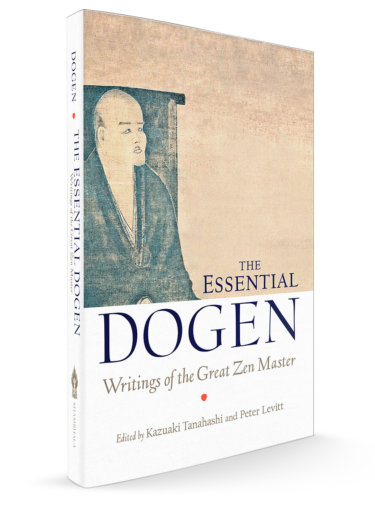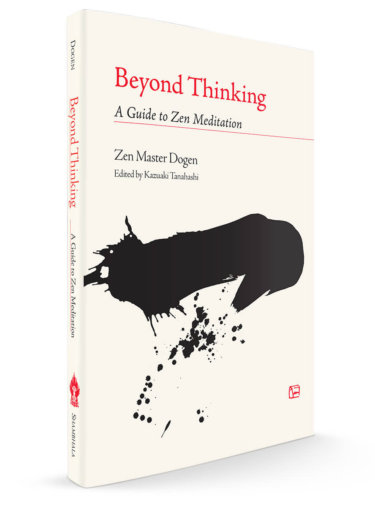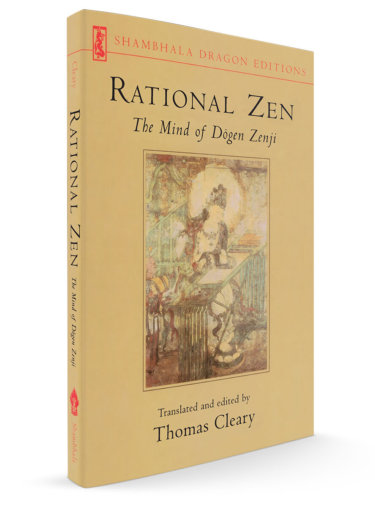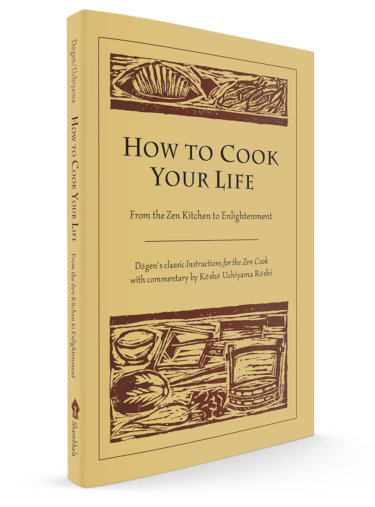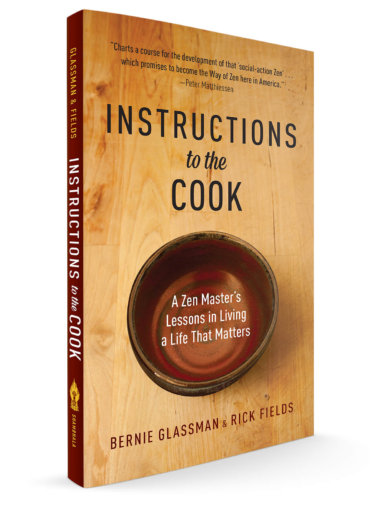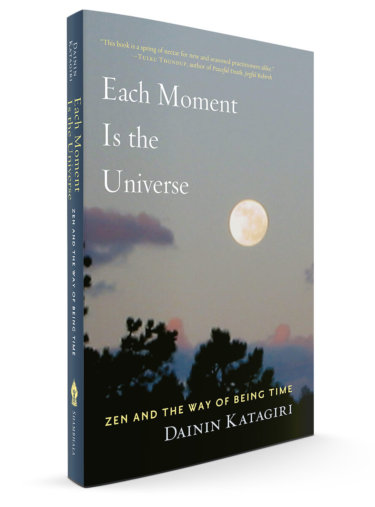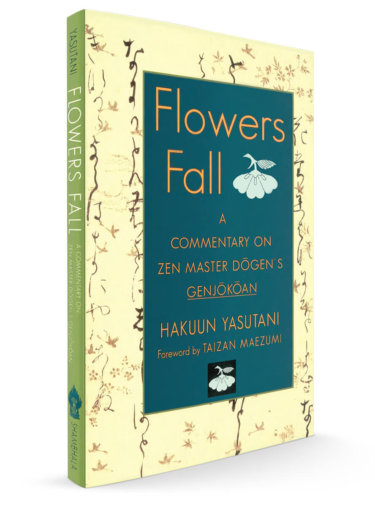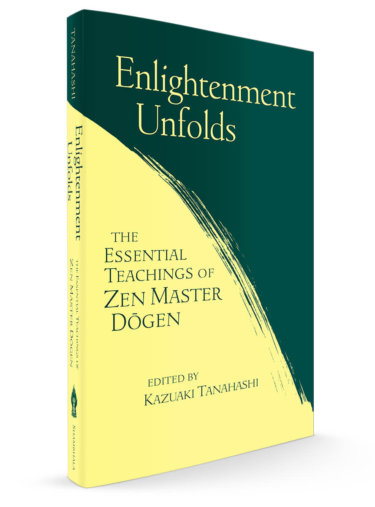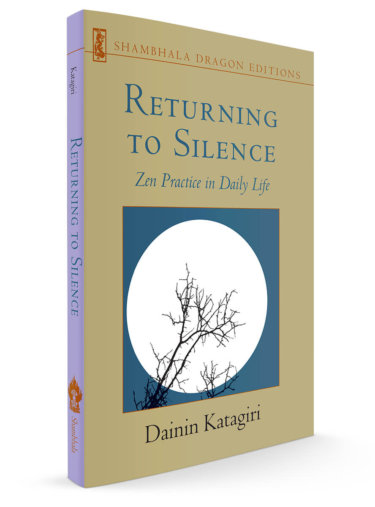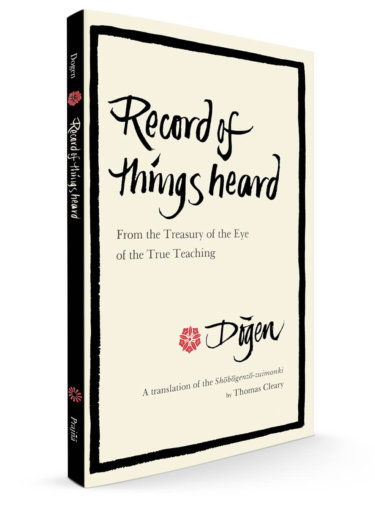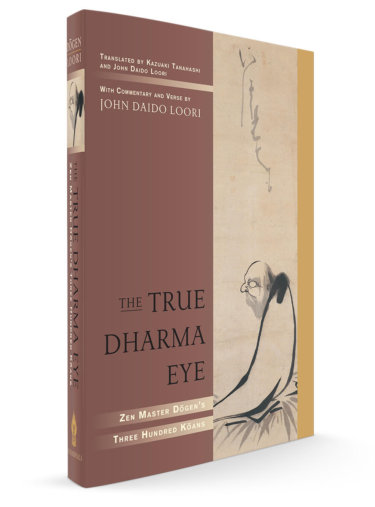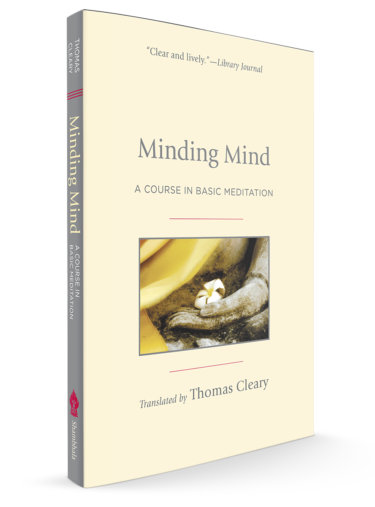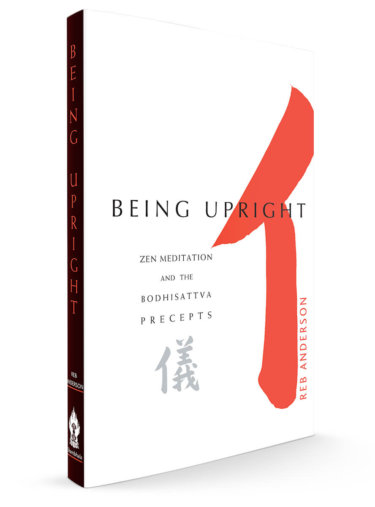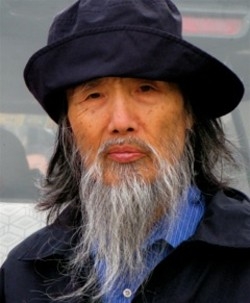

Kazuaki Tanahashi
KAZUAKI TANAHASHI, a Japanese-trained calligrapher, is the pioneer of the genre of “one-stroke painting” as well as the creator of multicolor enso (Zen circles). His brushwork has been shown in exhibitions in galleries, museums, and universities all over the world. Tanahashi is the author of over forty books, including Painting Peace, Heart of the Brush, and The Heart Sutra.
Kazuaki Tanahashi
-
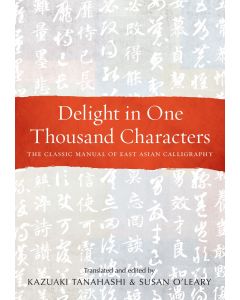 Delight in One Thousand Characters$24.95- Paperback
Delight in One Thousand Characters$24.95- PaperbackTranslated by Kazuaki Tanahashi
Translated by Susan O'Leary -
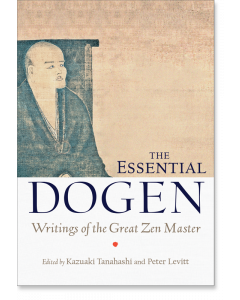 The Essential Dogen$21.95- Paperback
The Essential Dogen$21.95- PaperbackEdited by Kazuaki Tanahashi
Edited by Peter Levitt
By Zen Master Dogen -
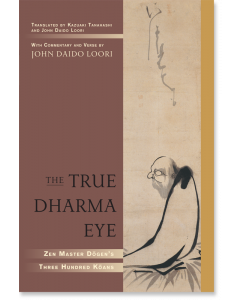 The True Dharma Eye$39.95- Paperback
The True Dharma Eye$39.95- PaperbackTranslated by John Daido Loori
Translated by Kazuaki Tanahashi
By Zen Master Dogen -
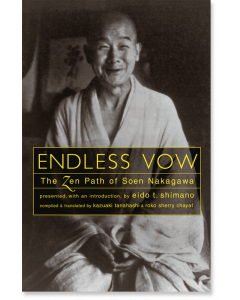 Endless Vow$24.95- Paperback
Endless Vow$24.95- PaperbackBy Soen Nakagawa
Translated by Kazuaki Tanahashi
Translated by Roko Sherry Chayat
- Bestsellers Zen 1 item
- Buddhist Academic 1 item
- Buddhist Art 2item
- Buddhist Biography/Memoir 2item
- Buddhist History 1 item
- Heart Sutra 2item
- Prajnaparamita 1 item
- Sutra 1 item
- Chan/Chinese Zen 1 item
- Dogen 5item
- Japanese Zen 10item
- Koan practice 1 item
- Shobogenzo 4item
- Soto 1 item
- Zen art 4item
- Spiritual Poetry 2item
- Buddhist Poetry 2item
- Nature & Environment 1 item
- Biography 2item
- Taoist Philosophy 1 item
- Eastern Philosophy 2item
- Calligraphy 5item
- Drawing 2item
- Writing 1 item
- Japanese Culture 4item
GUIDES
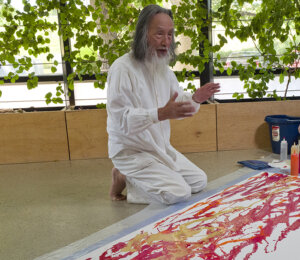
Kazuaki Tanahashi: A Guide for Readers

Kazuaki (Kaz) Tanahashi is a gem with many facets: peace and environmental activism, generosity, art, poetry, creativity and more.
Below you will find many of his contributions in book form, sometimes as translator, sometimes as editor, sometimes as author, always as collaborator. One of the things you will notice with any of the books Kaz is involved with is that they are a team effort, assisted by his vast network of friends and admirers.
We have separated his works across a few categories you can jump to from here: those on art and calligraphy; the great Zen master Dogen; Hanshan, Ryoken, and Soen Nakagawa; and the Heart Sutra and other Zen chants.
We put this reader guide together to mark his 90th birthday which was celebrated at Green Gulch Zen Center in September, 2023, but his output has not slowed and additional books will be added here as they come out.

On Dogen
Unsurprisingly, Dogen has been a major focus of Kaz's translation work. As the spearhead of a project involving many from the San Francisco Zen Center community, Kaz has edited, compiled, introduced and translated multiple works of Dogen. The first, Moon in a Dewdrop, is still in print but with another publisher. The others are below, culminating in Dogen's masterpiece, The Treasury of the True Dharma Eye.
Paperback | Ebook
$21.95 - Paperback
On this volume, Kaz writes,
This volume is intended to make [Dogen's] writings easily accessible to readers, including those who are not familiar with Zen or Buddhism in general. Peter Levitt and I have selected passages from Dogen’s enormous body of work throughout his career and classified them according to theme. We hope that this approach will help those who are interested in his thinking and teachings on various topics. We have also included a selection of Dogen’s poems that, at a glance, might appear eccentric or absurd but may be more easily understood when placed in the context of his other writings.
Paperback | Ebook
$24.95 - Paperback
Enlightenment Unfolds: The Essential Teachings of Zen Master Dogen
Enlightenment Unfolds is a sequel to Kaz Tanahashi's previous collection, Moon in a Dewdrop.
Tanahashi has brought together his own translations of Dogen with those of some of the most respected Zen teachers and writers of our own day, including Reb Anderson, Edward Espe Brown, Norman Fisher, Gil Fronsdal, Blanche Hartman, Jane Hirschfield, Daniel Leighton, Alan Senauke, Katherine Thanas, Mel Weitzman, and Michael Wenger.
Paperback | Ebook
$22.95 - Paperback
Beyond Thinking: A Guide to Zen Meditation
On this volume, another collaboration of many contributors, Kaz writes,
For this book we have selected his essays, talks, and instructions that touch on various aspects of Zen meditation. We present the text in four parts: ‘‘Entering Zazen,’’ ‘‘Zazen Experience,’’ ‘‘Zazen in Community,’’ and ‘‘Zazen through the Seasons.’’
In focusing on Dogen's most practical words of instruction and encouragement for Zen students, this collection highlights the timelessness of his teaching and shows it to be as applicable to anyone today as it was in the great teacher's own time. Selections include Dogen's famous meditation instructions; his advice on the practice of zazen, or sitting meditation; guidelines for community life; and some of his most inspirational talks. Also included are a bibliography and an extensive glossary.
Paperback | Ebook
$39.95 - Paperback
Distinct from the Treasury of the True Dharma Eye below, this is a collection of three hundred koans compiled by Dogen which presents readers with a uniquely contemporary perspective on his profound teachings and their relevance for modern Western practitioners of Zen. Following the traditional format for koan collections, John Daido Loori Roshi, an American Zen master, has added his own commentary and accompanying verse for each of Dogen’s koans. Kaz Tanahashi translated this work. Zen students and scholars will find The True Dharma Eye to be a source of deep insight into the mind of one of the world’s greatest religious thinkers, as well as the practice of koan study itself.
Hardcover | Ebook
$100.00 - Hardcover
Treasury of the True Dharma Eye (Shobo Genzo, in Japanese) is Dogen's manum opus and a monumental work, considered to be one of the profoundest expressions of Zen wisdom ever put on paper, and also the most outstanding literary and philosophical work of Japan. It is a collection of essays by Eihei Dogen (1200–1253), founder of Zen’s Soto school.
Kazuaki Tanahashi and a team of translators that represent a Who’s Who of American Zen have produced a translation of the great work that combines accuracy with a deep understanding of Dogen’s voice and literary gifts. This volume includes a wealth of materials to aid understanding, including maps, lineage charts, a bibliography, and an exhaustive glossary of names and terms—and, as a bonus, the most renowned of all Dogen’s essays, “Recommending Zazen to All People.”
The Heart Sutra and Zen Chants
Paperback | Ebook
$24.95 - Paperback
The Prajna Paramita Hridaya Sutra is among the best known of all the Buddhist scriptures. Chanted daily by many Zen students, it is also studied extensively in the Tibetan tradition, and it has been regarded with interest more recently in the West in various fields of study—from philosophy to quantum physics. In just thirty-five lines, it expresses the truth of impermanence and the release from suffering that results from the understanding of that truth with a breathtaking economy of language. Kazuaki Tanahashi’s guide to the Heart Sutra is the result of a life spent working with it and living it.
The book is divided into six parts. In Kaz's words:
"Part One, 'The Heart Sutra Here and Now,' presents a new translation of the text by Joan Halifax and myself. Our intention is to bring forth the sutra’s essential teaching of transcendence and freedom, which is often obscured by seemingly pessimistic and nihilistic expressions. We use the word “boundlessness” instead of the more common translation “emptiness” for the Sanskrit word shunyata. We use “free of the eyes, ears, nose . . .” instead of the usual rendition “no eyes, no ears, no nose . . .” Because we want to make the sutra accessible to non-Buddhists as well as Buddhists, we have replaced such traditional technical terms as bodhisattva and nirvana with more easily understandable words. I hope those of you who are used to chanting the common English versions of the sutra will find our translation helpful and thought-provoking. This first part also includes stories of my own affinity with the scripture and its potential to inspire us all.
Part Two, 'Story of the Sutra,' introduces ancient recountings of its use as a living text, as well as descriptions of my visits to temples in Korea and Japan, where I conducted research on the historical impact of the sutra.
Parts Three and Four, 'Modern Scholarship' and 'Most Recent Scholarship,' discuss scholarly findings over the course of two centuries about the formation and expansion of the text.
Part Five, 'Globalizing the Sutra,' discusses Chinese enthusiasm for and pan-Asian responses to the text, as well as examples of how the sutra has inspired modern scientists.
Part Six, 'Terms and Concepts,' includes semantic, etymological, and grammatical analyses of the Sanskrit and Chinese terms in the text. Most of the words in the sutra have Sanskrit origins, so looking at these terms is extremely fruitful. A Chinese version has become the standard text in East Asia, however, and was the basis for some of the translations of the sutra in European languages. Three English translations are also included here: the version by F. Max Müller from the late nineteenth century, as well as those by D. T. Suzuki and Edward Conze from the twentieth century."
Ruth Ozeki had this to say about this work:
“A masterwork of loving and meticulous scholarship, Kaz Tanahashi’s Heart Sutra is a living, breathing, deeply personal celebration of a beloved text, which all readers—Buddhists and non-Buddhists, newcomers to the teaching and seasoned scholars alike—will cherish throughout time.
Using Kaz’s book The Heart Sutra: A Comprehensive Guide to the Classic of Mahayana Buddhism as its text, this course delves deep into the history and lived experience of the Heart Sutra, posing questions and drawing connections to help you integrate this precious teaching into your daily life and awareness, whether you are encountering the sutra for the first time or have chanted it for decades. We invite you to join these two remarkable and wise teachers in exploring the boundless nature of all existence through this core text.
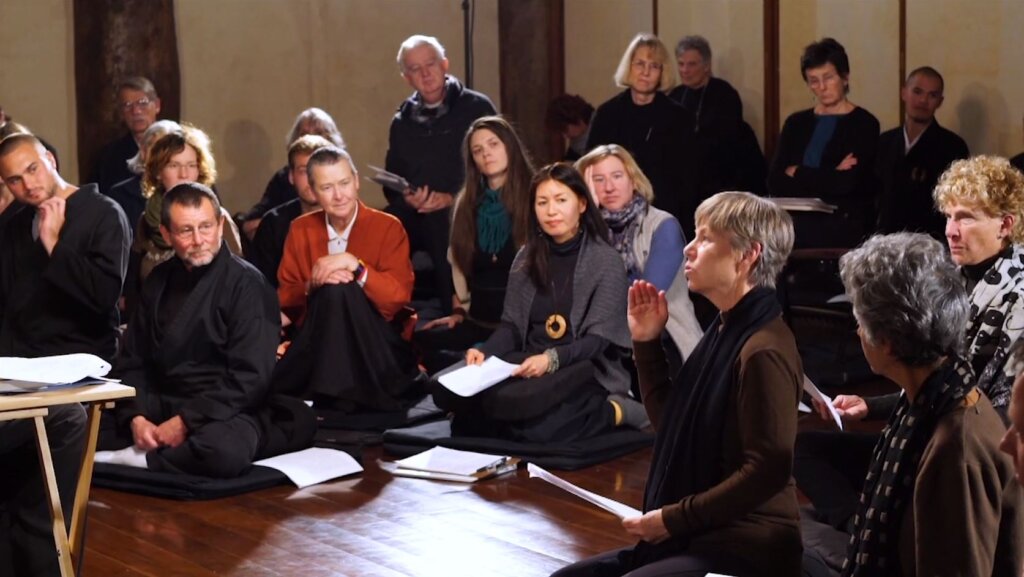
Paperback | Ebook
$21.95 - Paperback
Zen Chants: Thirty-Five Essential Texts with Commentary
A Zen chant is like a compass that sets us in the direction of the awakened life; it is the dynamic, audible counterpart to the silent practice of zazen, or sitting meditation; and it is a powerful expression of the fact that practice happens in community. Here is a concise guide to Zen chants for practitioners, as well as for anyone who appreciates the beauty and profundity of the poetry in dharma. An introduction to the practice is followed by fresh and carefully considered translations and adaptations of thirty-five chants—some common and others less well known—along with illuminating commentary.
The accompanying audio of this book:
On Ryoken, Hanshan, and Soen Nakagawa
Paperback | Ebook
$18.95 - Paperback
Sky Above, Great Wind: The Life and Poetry of Zen Master Ryokan
Ryokan (1758–1831) is, along with Dogen and Hakuin, one of the three giants of Zen in Japan. But unlike his two renowned colleagues, Ryokan was a societal dropout, living mostly as a hermit and a beggar. He was never head of a monastery or temple. He liked playing with children. He had no dharma heir. Even so, people recognized the depth of his realization, and he was sought out by people of all walks of life for the teaching to be experienced in just being around him. His poetry and art were wildly popular even in his lifetime. He is now regarded as one of the greatest poets of the Edo Period, along with Basho, Buson, and Issa. He was also a master artist-calligrapher with a very distinctive style, due mostly to his unique and irrepressible spirit, but also because he was so poor he didn’t usually have materials: his distinctive thin line was due to the fact that he often used twigs rather than the brushes he couldn’t afford. He was said to practice his brushwork with his fingers in the air when he didn’t have any paper. There are hilarious stories about how people tried to trick him into doing art for them, and about how he frustrated their attempts. As an old man, he fell in love with a young Zen nun who also became his student. His affection for her colors the mature poems of his late period. This collection contains more than 140 of Ryokan’s poems, with selections of his art, and of the very funny anecdotes about him.
The Complete Cold Mountain: Poems of the Legendary Hermit Hanshan
Kaz translated this complete set of Hanshan's poems with Peter Levitt.
Welcome to the magical, windswept world of Cold Mountain. These poems from the literary riches of China have long been celebrated by cultures of both East and West—and continue to be revered as among the most inspiring and enduring works of poetry worldwide. This groundbreaking new translation presents the full corpus of poetry traditionally associated with Hanshan (“Cold Mountain”) and sheds light on its origins and authorship like never before. Kazuaki Tanahashi and Peter Levitt honor the contemplative Buddhist elements of this classic collection of poems while revealing Hanshan’s famously jubilant humor, deep love of solitude in nature, and overwhelming warmth of heart. In addition, this translation features the full Chinese text of the original poems and a wealth of fascinating supplements, including traditional historical records, an in-depth study of the Cold Mountain poets (here presented as three distinct authors), and more.
Endless Vow: The Zen Path of Soen Nakagawa
Endless Vow is the first English-language collection of the literary works of Soen Nakagawa Roshi. An intimate, in-depth portrait of the master of Eido Tai Shimano, his Dharma heir, introduces the poems, letters, journal entries, and other writings of Soen Roshi, which are illustrated with his calligraphies. In a postscript, some of his best-known American students—including Peter Matthiessen and Ruth McCandless—reminisce about this legendary figure of American Buddhist history.
Here is what Kaz has to say about the book,
Zen Master Soen Nakagawa was a key figure in the transmission of Zen Buddhism from Japan to the Western world. As abbot of the historic Ryutaku Monastery, he trained monks and lay practitioners. Among them were Robert Aitken and Philip Kapleau, who later became two of the first Westerners to teach Zen in the United States. Soen Roshi had a major impact upon Paul Reps, Maurine Stuart, Peter Matthiessen, Louis Nordstrom, Charlotte Joko Beck, and a great number of other Westerners whom he taught in and outside of Japan.
Soen Nakagawa was also an extraordinary poet. In Japan his haiku are renowned, even though no substantial collection of his work has been made available to the general public. Because he did not wish his anthologies to receive wide circulation in his lifetime, all four collections of his poems were published privately, in limited editions, for small circles of readers.
We have selected materials for this book largely from those four collections: Shigan (Coffin of Poems), 1936; Meihen (Life Anthology), 1949; Henkairoku (Journal of a Wide World) with Koun-sho (Ancient Cloud Selection), 1981; and Hokoju (Long Lasting Dharma Light), published posthumously in 1985. These selections are now presented in English for the first time.
On Art, Calligraphy, and Haiku
Paperback | Ebook
$21.95 - Paperback
“Awakening,” says Kaz, “is to realize the infinite value of each moment of your own life as well as of other beings, then to continue to act accordingly.” This book is the record of a life spent acting accordingly: through his prose, poetry, letters, lyrics, and art, Tanahashi provides an inspirational account of a what it’s been like to work for peace and justice, from his childhood in Japan to the present day. Included are fascinating vignettes of the seminal figures who refined his views—among them Daniel Ellsberg, Gary Snyder, Mayumi Oda, and Morihei Ueshiba, the founder of Aikido—as well as striking examples of the art he has so famously used to bear witness to the infinite value of life.
It is such a wonderful that shows so many facets of his activism, generosity, commitment to peace, art, poetry, creativity and more. It is incredible to hear about his training with Morihei Ueshiba, the role his father played in the military leading up to the war and the impact these had on Kaz. It is sure to leave you with a deep appreciation of his work in all its variety.
Paperback
$39.95 - Paperback
This comprehensive and accessible introduction to the history and art of calligraphy as it’s been practiced for centuries in Asia offers the possibility of appreciating it in a hands-on way. It works as a guide for the beginner hoping to develop an appreciation for Asian calligraphy, for the person who wants to give calligraphy-creation a try, as well as for the expert or afficionado who wants nothing more than to exult in lovely examples of this art. After proving a brief overview, Kazuaki Tanahashi invites you to give it a try yourself, giving guidance for materials, and then instruction in the basic strokes. He then provides examples of 150 characters, from action to zen, with history and development of each, famous examples, stroke sequences, and the author’s interpretation of the character in styles that range from traditional to modern. It’s a calligraphy course in a book, but it’s also a book for hours of meditative browsing.
O'Leary describes it this:
The One Thousand Character Essay is both essay and visual art. For brush calligraphers who do not read Chinese, this text offers a rare opportunity (by looking at the bottom of the facing left-hand page for translation and then reading a column of characters on the right-hand page), to take in the visual aspects of a larger meaning, of several characters in a row. To compare, side by side and over and over, formal and cursive script. Then glance back again to the top of the left-hand page, for the specific
meaning of a particular character. For me, this was entering a calligraphic text as I never had before.In recent years, some calligraphers have been taking cellphone photos of individual characters and then enlarging them on the phone screen to be able to study the detail of strokes and how the calligrapher formed them. It is mesmerizing to look so closely at Zhiyong’s art. This form of attention can seem to slow down time, and it feels like an opportunity for carefully observing that only museum conservators could have had until very recently. We encourage you to try this.
Kaz once said to me, “I believe in the power of writing. I believe in the power of art.” You hold in your hands the written art of space and time. Of black night sky and earth. Ochre earth.
In this online workshop, you can study with him up close, as he guides you in exploring the wondrous world of brush calligraphy.
In each of the eight workshop sessions, Kaz will guide you in making a close study of an ancient Chinese masterpiece. He will demonstrate the character himself and then comment on the work of several of his calligraphy friends to help you deepen your understanding. He ends each session with homework designed to help you cultivate your own calligraphy practice.
You don’t need to have any previous experience of calligraphy or know any East Asian language to take this course. It takes years of practice to be a good calligrapher, but in this workshop and through Kaz’s unique style of teaching, you will experience both a beginning and, at the same time, an advanced study of East Asian calligraphy.
Paperback
$24.95 - Paperback
In this translation collaboration between Kaz and Susan O'Leary, The Thousand Character Essay is China’s most widely used and beloved calligraphy textbook—sung to infants as a lullaby, used to teach reading and writing, employed as library index codes, and more. Composed by the literary giant Zhou Xingsi and handwritten by sixth-century Buddhist monk Zhiyong, this masterful work has endured for centuries as the standard guide for brush writing both in formal and cursive scripts. Delight in One Thousand Characters brings this sublime body of art-as-text to English-speaking readers, detailing the fascinating history, geographic range, and aesthetic nuance of the essay. Preserving the renowned beauty of Zhiyong’s only extant handwriting, the book includes a full one-hundred-strip edition of his calligraphy and offers corresponding commentary explaining the meaning of each character.
O'Leary describes it this:
The One Thousand Character Essay is both essay and visual art. For brush calligraphers who do not read Chinese, this text offers a rare opportunity (by looking at the bottom of the facing left-hand page for translation and then reading a column of characters on the right-hand page), to take in the visual aspects of a larger meaning, of several characters in a row. To compare, side by side and over and over, formal and cursive script. Then glance back again to the top of the left-hand page, for the specific
meaning of a particular character. For me, this was entering a calligraphic text as I never had before.In recent years, some calligraphers have been taking cellphone photos of individual characters and then enlarging them on the phone screen to be able to study the detail of strokes and how the calligrapher formed them. It is mesmerizing to look so closely at Zhiyong’s art. This form of attention can seem to slow down time, and it feels like an opportunity for carefully observing that only museum conservators could have had until very recently. We encourage you to try this.
Kaz once said to me, “I believe in the power of writing. I believe in the power of art.” You hold in your hands the written art of space and time. Of black night sky and earth. Ochre earth.
Paperback | Ebook
$16.95 - Paperback
A White Tea Bowl: 100 Haiku from 100 Years of Life
Kaz edited A White Tea Bowl, a selection of 100 haiku written by Mitsu Suzuki, the widow of Shunryu Suzuki Roshi, which was published in celebration of her 100th birthday. The compelling introduction by Zen priest Norman Fischer describes the profound impact on her life and work of war in Japan and social upheaval in America.
Part I: 100 Haiku presents a kaleidoscope of poems by Mitsu Suzuki that touch all aspects of her being: her dedication to the Buddha way, the loneliness of a widow's life, her generational role as "Candy Auntie," her sensitive attunement to nature, and her moments of insight into the dharma. The more you read these haiku, the more their wisdom will emerge.
Part II: Pickles and Tea contains reminiscences and anecdotes about Mitsu Suzuki by those who lived and studied with her at the San Francisco Zen Center; often these meetings took place in Mitsu's kitchen where she provided countless cups of tea, cookies, and homemade pickles as well as sage advice.
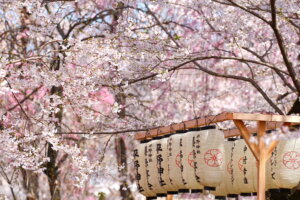

See our other Year in Review Guides:
Theravada/Pali/Insight | Zen and Chan | Tibetan Buddhism
Yoga | Personal Development | Kids Books
We are very happy to share with you a look back at our 2022 books on Zen and Chan Buddhism
Jump to: Reader Guides | Books | Books for Kids | Forthcoming Books | Audiobooks
The Five Remembrances - An Excerpt from Alive Until You're Dead by Susan Moon
Knowing How to Be Satisfied - An Excerpt from Alive Until You're Dead by Susan Moon
Remembering Stephen Addiss (author of The Art of Haiku) 1935-2022
Being Mindful of Body, Thoughts, and Feelings - an Excerpt from Heart Medicine by Radhule Weininger
Treasury of the Eye of True Teaching: Classic Stories, Discourses, and Poems of the Chan Tradition
Translated by Thomas Cleary
Chan master Dahui’s monumental compilation of teachings is brought to life for the first time in English
The final translation of the late Thomas Cleary. The Treasury of the Eye of True Teaching (Chinese Zhengfayanzang) stands among the greatest classics of Chan Buddhism—the Zen tradition of China—combining speeches, stories, dialogues, poems, and commentaries that the acclaimed Chinese master Dahui (1089–1163) extracted from Chan lore. Compiled during the Song Dynasty by Dahui’s disciples, this work is replete with the enigmatic, paradoxical wisdom for which this influential Buddhist tradition is so well known.
Famous for his challenging methodology and vigorous efforts to eliminate attachment to both conventional thinking and the grasping of the ego, Dahui here focuses on the teaching of “great doubt.” By grappling with “great doubt,” Dahui demonstrates how practitioners are able to push themselves to the limits of ideas and concepts until a breakthrough to enlightenment is achieved.
A fascinating compendium of literary and spiritual puzzles, Treasury of the Eye of True Teaching challenges and inspires its readers to examine their ingrained mental habits and attachments—and to discover their inborn potential for an immediate and direct experience of reality.
Delight in One Thousand Characters: The Classic Manual of East Asian Calligraphy
Translated and introduced by Kazuaki Tanahashi and Susan O'Leary
A beautifully curated presentation of the Thousand Character Essay, a masterpiece of Chinese calligraphy that has served as the art form’s classic manual for over 1,400 years.
The Thousand Character Essay is China’s most widely used and beloved calligraphy textbook—sung to infants as a lullaby, used to teach reading and writing, employed as library index codes, and more. Composed by the literary giant Zhou Xingsi and handwritten by sixth-century Buddhist monk Zhiyong, this masterful work has endured for centuries as the standard guide for brush writing both in formal and cursive scripts. Delight in One Thousand Characters brings this sublime body of art-as-text to English-speaking readers, detailing the fascinating history, geographic range, and aesthetic nuance of the essay. Preserving the renowned beauty of Zhiyong’s only extant handwriting, the book includes a full one-hundred-strip edition of his calligraphy and offers corresponding commentary explaining the meaning of each character.
Poetry and Zen: Letters and Uncollected Writings of R. H. Blyth
By R. H. Blyth, edited by Norman Waddell
Poetry and Zen assembles a remarkable literary feast: the letters, articles, translations, reviews, and selections from the papers of Reginald Horace Blyth (1898–1964). Following on the landmark success of Zen in English Literature and Oriental Classics (1942), Blyth’s voluminous writings on Zen, Japanese culture, and the Japanese verse forms haiku and senryū captured the imagination of English-speaking readers in the decades following World War II. His enlightening wit and inimitable style struck a particularly sensitive chord in the artistic community, providing inspiration to many poets and writers and helping to kindle global interest in Zen and haiku.
Talking Zen: Reflections on Mind, Myth, and the Magic of Life
By Alan Watts
Enter the mind of Alan Watts on Zen, Taoism, psychedelics, and comparative philosophy
Alan Watts’s lifetime of lectures and essays range widely through psychology, art, religion, and politics, but so often come home to a Zen core. This collection of his teachings, drawn from forty years of public speaking and writing, presents his characteristic brilliance and inimitable humor as he explores the deep connections between Eastern and Western wisdom—and, most especially, the unique contributions that the Zen tradition has to offer us all. Using down-to-earth, accessible language, Watts elucidates the seemingly subtle and mysterious way of Zen with immediately familiar terms and profoundly transformative ideas. As breathtaking to his original audiences as to us today, these monumental teachings paved the way for the rise of Zen in the West.
Zen Master Tales: Stories from the Lives of Taigu, Sengai, Hakuin, and Ryokan
By Peter Haskel
A lively collection of folk tales and Buddhist teaching stories from four noted premodern Japanese Zen masters: Taigu Sōchiku (1584–1669), Sengai Gibon (1750–1831), Hakuin Ekaku (1686–1769), and Taigu Ryōkan (1758–1831).
Zen Master Tales collects never-before-translated stories of four prominent Zen masters from the Edo period of Japanese history (1603–1868). Drawn from an era that saw the “democratization” of Japanese Zen, these stories paint a picture of robust, funny, and poignant engagement between Zen luminaries and the emergent chonin or “townsperson” culture of early modern Japan. Here we find Zen monks engaging with samurai, merchants, housewives, entertainers, and farmers. These masters affirmed that the essentials of Zen practice—zazen, koan study, and even enlightenment—could be conveyed to all members of Japanese society in ordinary speech, including even comic verse and work songs.
In his introduction, translator Peter Haskel explains the history of Zen “stories” from the tradition’s Golden Age in China through the compilation of the classic koan collections and on to the era from which the stories in Zen Master Tales are drawn. What was true of the Chinese tradition, he writes—“its focus on the individual’s ordinary activity as the function, the manifestation of the absolute”—continued in the Japanese context. “Most of these Japanese stories, however unabashedly humorous and at times crude, impart something of the character of the Zen masters involved, whose attainment must be plainly manifest in even the most humble and unlikely of situations.”
Yin Mountain: The Immortal Poetry of Three Daoist Women
Translated by Rebecca Nie and Peter Levitt
Freshly translated poems reveal the complexity, self-realization, and spiritual freedom of three classical Daoist women poets.
Yin Mountain presents a fascinating window onto the lives of three Tang Dynasty Daoist women poets. Li Ye (c. 734–784), Xue Tao (c. 768–832), and Yu Xuanji (843–868) lived and wrote during the period when Chinese poetry reached its greatest height. Yet while the names of the male poets of this era, such as Tu Fu, Li Bo, and Wang Wei, are all easily recognized, the names of its accomplished women poets are hardly known at all.
Through the lenses of mysticism, naturalism, and ordinary life, the five dozen poems collected here express these women’s profound devotion to Daoist spiritual practice. Their interweaving of plain but poignant and revealing speech with a compelling and inventive use of imagery expresses their creative relationship to the myths, legends, and traditions of Daoist Goddess culture. Also woven throughout the rich tapestry of their writing are their sensuality and their hard-wrought, candid emotions about their personal loves and losses. Despite that these poets’ extraordinary skills were recognized during their lifetimes, as women they struggled relentlessly for artistic, emotional, and financial independence befitting their talent. The poems exude the charged charisma of their refusal to hold back within a culture, much like our own, that was cosmopolitan yet still restrictive of women’s freedom.
Skillfully introduced and translated by acclaimed translators Peter Levitt and Rebecca Nie, these wonderful poems will resonate with the lives of spiritual practitioners today, especially women.
Through Forests of Every Color: Awakening with Koans
By Joan Sutherland
An intimate spiritual and literary journey exploring how Zen koans make us permeable to the joys and the anguish of this life—and to the primordial mystery we glimpse behind the veil of the everyday.
Koans are the record of paradoxical and provocative exchanges between Zen masters and their students that developed in medieval China. These exchanges, though often elaborated through commentary, have also been boiled down to one-line questions or statements to be held in meditation and daily life. Famous examples include, "What is the sound of one hand?" and "Not knowing is most intimate." In Through Forests of Every Color, renowned Zen teacher Joan Sutherland reimagines the koan tradition with allegiance to the root spirit of the koans and to their profound potential for vivifying, subverting, and sanctifying our lives.
Interlinked essays on “koans as art,” “keeping company with koans,” and “walking the koan way” intersperse with beautifully translated renditions of dozens of traditional Zen koans. Sutherland also shares innovative koans culled from Western literature, as well as teachings on how to create idiosyncratic koans or "turning phrases" from the circumstances of one's own life. “First honored is your yearning, the preparation made on faith that there is something that will receive you if you make yourself ready,” writes Sutherland of the koan seeker. “Bathed—attended to, washed free of complications—and then aspiring to the deepest kind of beauty—receptive, brave, dedicated, openhearted. Already you’ve begun to look like the thing you’re looking for.”
Alive Until You're Dead: Notes on the Home Stretch
By Susan Moon
Poignant and humorous insights on fully embracing our lives as we age from Susan Moon, beloved Buddhist teacher and author.
Aging isn’t easy. But it can still be filled with joy—maybe even more joy than we expect. Described by the New York Journal of Books as “a Buddhist Anne Lamott,” Zen teacher and writer Susan Moon explores both the losses and the gifts that come with the final years. Joining levity with tenderness, Moon shares stories from her own life including knee replacements, cornea surgery, Zoom chats with grandchildren, and dementia. Moon illustrates the strength that can come from within, sometimes unexpectedly, even as our bodies fail. Our radiant aliveness can be discovered and rediscovered any time up to the last moment.
Alive Until You’re Dead offers a Zen approach to aging. Moon’s stories explore being present with what is, not turning away from what’s difficult, wishing for and working for the wellbeing of others, and being willing not to know what’s next. Moon writes of her most personal vulnerabilities in the service of connecting with everyone. These field notes from an old human being invite us to feel more alive in the final stretch, whatever it holds.
The Shamanic Bones of Zen: Revealing the Ancestral Spirit and Mystical Heart of a Sacred Tradition
By Zenju Earthlyn Manuel
In The Shamanic Bones of Zen, celebrated author and Buddhist teacher Zenju Earthlyn Manuel undertakes a rich exploration of the connections between contemporary Zen practice and shamanic, or indigenous, spirituality. Drawing on her personal journey with the black church, with African, Caribbean, and Native American ceremonial practices, and with Nichiren and Zen Buddhism, she builds a compelling case for cultivating the shamanic, or magical, elements in Buddhism—many of which have been marginalized by colonialist and modernist forces in the religion. The book conveys guidance for readers interested in Zen practice including ritual, preparing sanctuaries, engaging in chanting practices, and deepening embodiment with ceremony.
Wild Mind, Wild Earth: Our Place in the Sixth Extinction
By David Hinton
Exploring the confluence of ancient Chinese spirituality and modern Western environmental thought, Wild Mind, Wild Earth reveals the unrecognized kinship of mind and nature that must be reanimated if we are to end our destruction of the planet.
Earth is embroiled in its sixth major extinction event—this time caused not by asteroids or volcanos, but by us. At bottom, preventing this sixth extinction is a spiritual and philosophical problem, for it is the assumptions defining us and our relation to earth that are driving the devastation. Those assumptions insist on a fundamental separation of human and earth that devalues earth and enables our exploitative relation to it.
In Wild Mind, Wild Earth, David Hinton explores modes of seeing and being that could save the planet by reestablishing a deep kinship between human and earth: the insights of primal cultures and those of Ch’an (Zen) Buddhism of ancient China. He also shows how these insights have become well-established in the West over the last two hundred years through the work of poets, philosophers, and scientists. This offers marvelous hope and beauty—but like so many of us, Hinton recognizes that the sixth extinction is now an inexorable and perhaps unstoppable tragedy. And he reveals how those primal and Zen insights enable us to inhabit even the unfurling catastrophe as a profound kind of liberation. Wild Mind, Wild Earth is a remarkable and revitalizing journey.
The Art of Budo: The Calligraphy and Paintings of the Martial Arts Masters
By John Stevens
Beginning with the legendary samurai Miyamoto Musashi, nearly all of the great Japanese martial arts masters left a legacy of calligraphy and painting. In this art, rooted in the tradition of Zenga and Zensho (meditative painting and calligraphy), the brushstrokes are considered to be alive, conveying a master’s teaching directly and concisely. When the artwork is displayed in a dojo or more intimately in one’s home, the master is experienced as a living presence.
This stunning collection of spiritual calligraphy presents a concise history of this tradition, with works from Miyamoto Musashi, Takuan Soho, Yagyu Munenori, Saigo Takamori, Otagaki Rengetsu, Yamaoka Tesshu, Kano Jigoro, Ueshiba Morihei, and many others. Aikido master and Zen art expert John Stevens provides a fascinating introduction to the tradition, illuminating commentary on each piece, and biographical details on each of the warrior artists.
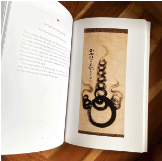
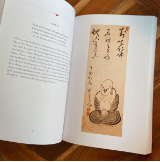
The Art of Haiku: Its History through Poems and Paintings by Japanese Masters
By Stephen Addiss
instead of home
the cool moon’s
straw mat
—Inoue Shiro
In the past hundred years, haiku has gone far beyond its Japanese origins to become a worldwide phenomenon—with the classic poetic form growing and evolving as it has adapted to the needs of the whole range of languages and cultures that have embraced it. Here one of the leading haiku scholars of the West takes us on a tour of haiku poetry’s evolution, providing along the way a wealth of examples of the poetry and the art inspired by it.
While haiku is one of the best-known forms of poetry, it is less known that traditional haiku were often accompanied by calligraphy and paintings. In this history of both the poetic and visual art forms, all aspects of the development of haiku are fully explored—deepened by a look at the role of haiku paintings, called haiga. Full of examples of the poems and the paintings, including full-color reproductions of forty haiku paintings, this is one of the few histories of haiku that also explores the visual aspect of the art.
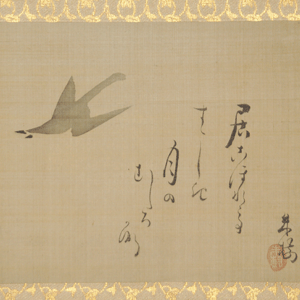
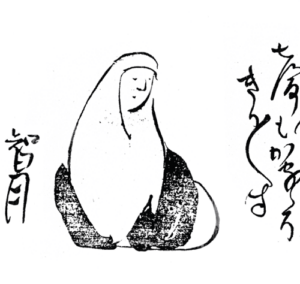
That Is Not Your Mind!: Zen Reflections on the Surangama Sutra
By Robert Rosenbaum
Viewed through the lens of psychology and neuroscience, a classic Zen sutra becomes a springboard for exploring sensory experiences and realizing freedom.
What does it mean to be liberated through one’s sensory life? In That Is Not Your Mind! Zen teacher Robert Rosenbaum explores this question by taking readers on a step-by-step journey through the Surangama Sutra. This Chinese Mahayana sutra is known for its emphasis on practicing with the senses (sight, sound, taste, smell, touch, and the Buddhist “sixth sense” of mind or cognition), as well as its teachings on the necessity of basic ethical commitments, like not killing or stealing, to support the development of one’s meditation practice and insight.
Rosenbaum interweaves passages from the sutra with contemporary insights from neuroscience and psychology, illustrating the usefulness of the text with anecdotes from his life and his forty years of teaching experience. In addition to learning about a sutra that played an important role in the creation of Chinese Chan and Japanese Zen Buddhism, readers are guided through meditations and other practices derived from the sutra’s teachings, such as hearing meditations (awareness of sound, awareness of silence, turning hearing inwards) and centering meditations (basic centering as well as centering on compassion).
"One of the most difficult aspects of Buddhist practice is wrapping our minds around how every moment is both a deceptive seeming and also a true gateway to awakening," writes Rosenbaum. "Nothing is hidden, but there is an infinite field we cannot see."
Mindful Medicine: 40 Simple Practices to Help Healthcare Professionals Heal Burnout and Reconnect to Purpose
By Jan Chozen Bays
Healers need healing too.
At times, healthcare work can be demanding, exhausting, and underappreciated. Those working in the field are passionate about relieving the suffering of others but often neglect their own health. They’re too tired at the end of the day to go to the evening burnout workshop that is offered by their hospital or clinic. They may even ponder leaving the profession that they love and have worked so hard and long to learn and perfect.
Mindful Medicine shares simple mindfulness practices and brief meditations that fit easily into the demanding schedule of a healthcare worker’s day, creating an experience of less stress and more presence, connection, ease, and flow. Addressing important topics such as connecting with yourself, connecting with your patients, the challenge of the Inner Critic in medicine, rescue remedies for times of stress, and meditations, this book offers evidence-based support for the many challenges that healthcare workers face. These short practices are an invitation to replenish the passion of healthcare work and douse the flickering flames of burnout.
The Path of Aliveness: A Contemporary Zen Approach to Awakening Body and Mind
By Christian Dillo
Buddhism aims for the development of a flexible mind and skillful responsiveness—whether toward problems in one’s personal life or broader issues like the ecological crisis. But in a culture now saturated with cliches about mindfulness and unrealistic fantasies about happiness, what does it truly mean to walk this path? The key practice is that of embodied aliveness.
In The Path of Aliveness, Zen and Taoist Qigong teacher Christian Dillo offers a path of meaningful transformation tailored to our times. Through potent conceptual work and practical examples, he shows how to carefully examine the interrelationship between our senses, body energy, thoughts, and emotions so that we can transform our lives in the direction of less suffering and more freedom, wisdom, and compassion. This secular reconstruction respectfully plumbs Buddhist tradition—including classic teachings such as the foundations of mindfulness meditation, the four noble truths, and the practice of lovingkindness—while encouraging practitioners to rely on their own embodied experience for maintaining an alive and engaged presence no matter the circumstances.
New in Paperback
Sage Leadership: Taoist Wisdom to Overcome Conflict and Create a Just World
By Thomas Cleary
For every would-be leader, this acclaimed Taoist classic offers timeless insights for building a better world
The Taoist sages of ancient China have long been lauded for their transformative teachings on the art of harmonious living, community organization, and cultivating the common good. Along with Sun Tzu’s Art of War, the Huainanzi, here brought to life in English by preeminent translator Thomas Cleary, represents an essential window into this long and cherished tradition. Yet, whereas the Art of War focuses on cunning strategy to quickly resolve conflict, the Huainanzi speaks to the organization of healthy societies, the management of complex group dynamics, and how to promote the highest ideals of harmony, freedom, adaptability, and sustainability in our world. With incisive teachings on the challenges and opportunities of leadership at all levels—from small-scale organizational management to political statecraft—its time-tested wisdom lights the way for any endeavor in business, management, politics, government, and everyday life.
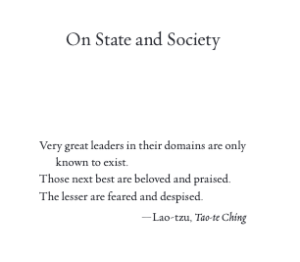
The Hero of Compassion: How Lokeshvara Got One Thousand Arms
By Harry Einhorn, Illustrated by Khoa Le
The magical story of a compassionate hero who learns how to always care for others and to never give up—for kids ages 4–8.
Lokeshvara shows us that with compassion,
we can always pick up the pieces of a broken heart,
and be stronger, more loving, and more wise than before.
Lokeshvara is a compassionate hero who lives above the moon. He tries to help every single being in the world but gets frustrated when he realizes that he can’t save everyone. Lokeshvara becomes so disheartened that he explodes into a thousand pieces. With a little help from a wise friend and teacher, the pieces are put back together in a way that can benefit even more beings than before.
Lokeshvara’s tale of compassion and resilience teaches us that even when we feel overwhelmed by the suffering we see in the world, we can still find creative ways to help those around us.
With beautiful illustrations that use a unique approach to color, shadows, and perspective to evoke a sense of magic and wonder, this retelling of a classic Asian Buddhist tale is timely and meaningful for kids and grown-ups alike.
Buddhist Stories for Kids: Jataka Tales of Kindness, Friendship, and Forgiveness
By Laura Burges, Illustrated by Sonali Zohra
A wise and colorful collection of ten Buddhist fables, this modern telling of ancient Indian stories, centering around animals and nature, teaches vibrant and timeless life lessons. (Ages 4–8)
Long ago, the Buddha told his followers Jataka Tales, or “birth stories,” about the many lifetimes he lived before he was born as Prince Siddhartha. In this beautiful retelling of ten such stories, the Buddha is introduced as the Queen of the Dogs, a loyal Parrot, a mischievous Monkey, a wise Lion, a brave Forest Owlet, and more.
Each story conveys important morals that are short, sweet, and to the point, giving children a handful of useful lessons to apply to their lives, like “Always try to do the right thing, even when no one else is watching.” These tales are brought to life with stunning and dreamlike illustrations by Sonali Zohra (illustrator of Ashoka the Fierce), exploring in vivid detail how one’s actions affect others; the importance of kindness; the strength of friendship; the value of thoughtful decisions; and the importance of letting go and learning to forgive. With a beautiful paper-over-board package to tie it all together, this book will serve as a timeless and treasured offering for both children and adults.
Newly Available in Audio
Come along with David Hinton on a series of walks through the wild beauty of Hunger Mountain, near his home in Vermont—excursions informed by the worldview he’s imbibed from his many years translating the classics of Chinese poetry and philosophy. His broad-ranging discussion offers insight on everything from the mountain landscape to the origins of consciousness and the Cosmos, from geology to Chinese landscape painting, from parenting to pictographic oracle-bone script, to a family chutney recipe. It’s a spiritual ecology that is profoundly ancient and at the same time resoundingly contemporary. Your view of the landscape—and of your place in it—may never be the same.
Renowned for his popular novels, Jim Harrison (1937–2016) was also widely acclaimed for the “renegade genius” of his powerful, expressive poems. Inspired by his many years of Zen practice, Harrison’s first collection of poetry directly inspired by his many years of Zen practice—After Ikkyū—is at once heartfelt and thought-provoking, the words of a deeply sincere seeker of truth even. Embracing the imperfections of the world we live in, After Ikkyū explores themes on human and animal nature, transformation and impermanence, and more plainly, the ubiquity of strife, struggle, and death and dying within the natural world—an ever-present condition which, despite our denial, rumbles in the hearts of each and every living being.
This audiobook edition is read by the author himself, an immortal treasure from one of America's most celebrated authors.
David Chadwick, a Texas-raised wanderer, college dropout, bumbling social activist, and hobbyhorse musician, began his study under Shunryu Suzuki Roshi in 1966. In 1988 Chadwick flew to Japan to begin a four-year period of voluntary exile and remedial Zen education. In Thank You and OK! he recounts his experiences both inside and beyond the monastery walls and offers insightful portraits of the characters he knew in that world—the bickering monks, the patient abbot, the trotting housewives, the ominous insects, the bewildered bureaucrats, and the frustrating English-language students—as they worked inexorably toward initiating him into the mysterious ways of Japan. Whether you're interested in Japan, Buddhism, or exotic travel writing, this book is great fun.
This audiobook is read by the author.
Forthcoming in 2023
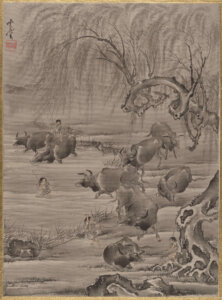
Zen in Japan: Up to the Meiji Restoration

Zen in Japan: Up to the Meiji Restoration
This is part of a series of articles on the arc of Zen thought, practice, and history, as presented in The Circle of the Way: A Concise History of Zen from the Buddha to the Modern World. You can start at the beginning of this series or simply explore from here.
Explore Zen Buddhism: A Reader's Guide to the Great Works
Overview
Chan in China
- The Works of the Chan and Zen Patriarchs
- The Works of Zen in the Tang Dynasty (618-907)
- The Works of Zen in the Song Dynasty (960 - 1279)
- The Great Koan Collections
Zen in Korea
Zen in Japan
- Early Zen in Japan
- Dogen: A Guide to His Works
- Rinzai Zen
- Hakuin Ekaku: A Reader's Guide
- The Samurai and Zen
> Zen in Japan up to the Meiji Restoration
Additional Resources
- The Heart Sutra: A Reader’s Guide
- Zen in the Modern World (Coming Soon)
- Foundational Sutras and Texts of Zen (Coming Soon)
- Zen and Tea
The period after Dogen and the early period of Zen saw rich developments, including of course the Rinzai school and the Samurai which are covered in the sister guides to this article. Here are some of the works we publish from after the early period up to the 19th century Meiji Restoration when changes in power made for a more challenging environment for Zen practitioners and institutions throughout Japan.
Secrets of the Blue Cliff Record: Zen Comments by Hakuin and Tenkei
Secrets of the Blue Cliff Record is a fresh translation featuring newly translated commentary from Hakuin of the Rinzai sect of Zen and Tenkei Denson (1648–1735) of the Soto sect of Zen.
Ryokan
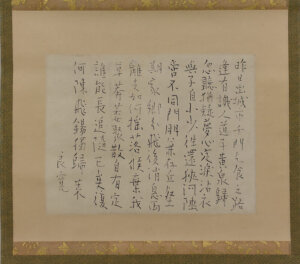
Chinese Poem Lamenting the Death of a Friend by Ryokan from the Met
Ryokan (1758–1831) is, along with Dogen and Hakuin, one of the three giants of Zen in Japan. But unlike his two renowned colleagues, Ryokan was a societal dropout, living mostly as a hermit and a beggar. He was never head of a monastery or temple. He liked playing with children. He had no dharma heir. Even so, people recognized the depth of his realization, and he was sought out by people of all walks of life for the teaching to be experienced in just being around him. His poetry and art were wildly popular even in his lifetime. He is now regarded as one of the greatest poets of the Edo Period, along with Basho, Buson, and Issa.
Sky Above, Great Wind: The Life and Poetry of Zen Master Ryokan
He was also a master artist-calligrapher with a very distinctive style, due mostly to his unique and irrepressible spirit, but also because he was so poor he didn’t usually have materials: his distinctive thin line was due to the fact that he often used twigs rather than the brushes he couldn’t afford. He was said to practice his brushwork with his fingers in the air when he didn’t have any paper. There are hilarious stories about how people tried to trick him into doing art for them, and about how he frustrated their attempts. As an old man, he fell in love with a young Zen nun who also became his student. His affection for her colors the mature poems of his late period. This collection contains more than 140 of Ryokan’s poems, with selections of his art, and of the very funny anecdotes about him.
Dewdrops on a Lotus Leaf: Zen Poems of Ryokan
Deceptively simple, Ryokan's poems transcend artifice, presenting spontaneous expressions of pure Zen spirit. Like his contemporary Thoreau, Ryokan celebrates nature and the natural life, but his poems touch the whole range of human experience: joy and sadness, pleasure and pain, enlightenment and illusion, love and loneliness. This collection of translations reflects the full spectrum of Ryokan's spiritual and poetic vision, including Japanese haiku, longer folk songs, and Chinese-style verse. Fifteen ink paintings by Koshi no Sengai (1895–1958) complement these translations and beautifully depict the spirit of this famous poet.
One Robe, One Bowl: The Zen Poetry of Ryokan
The hermit-monk Ryokan, long beloved in Japan both for his poetry and for his character, belongs in the tradition of the great Zen eccentrics of China and Japan. His reclusive life and celebration of nature and the natural life also bring to mind his younger American contemporary, Thoreau. Ryokan's poetry is that of the mature Zen master, its deceptive simplicity revealing an art that surpasses artifice.
Ikkyu

Twilight Landscape
In the Style of Ikkyū Sōjun Japanese. From the Met.
Finally, there is the figure of Ikkyu (1394–1481). While we do not have any stand-alone works on or by him, he appears in many, many works. In The Circle of the Way, he gets a few pages that begins:
Of all Muromachi-period Zen monastics, with all of their talent and accomplishments, the monk most well known today was something of a black sheep. Ikkyu Sojun (1394–1481) remains so popular in Japan that he has been portrayed in anime and the popular graphic art of manga.
Peter Matthiessen, In Nine-Headed Dragon River: Zen Journals, adds more color with his flowing prose, describing him as
A bastard son of the emperor, pauper, poet, twice-failed suicide, and Zen master, enlightened at last by the harsh call of a crow. At eighty-one Ikkyu became the iconoclastic abbot of Daitoku-ji. ('For fifty years I was a man wearing straw raincoat and umbrella-hat; I feel grief and shame now at this purple robe.') His 'mad' behavior was perhaps his way of disrupting the corrupt and feeble Zen he saw around him: 'An insane man of mad temper raises a mad air,' he wrote. He also said, 'Having no destination, I am never lost.' One infatuated scholar has called him 'the most remarkable monk in the history of Japanese Buddhism, the only Japanese comparable to the great Chinese Zen masters, for example, Joshu, Rinzai, and Unmon.' Ikkyu found no one he could approve as his Dharma successor. Before his death, civil disorders caused the near obliteration of Kyoto, forcing Rinzai Zen to follow Soto from the decadent capital city into the countryside.
by Jim Harrison
A collection of poems inspired by Ikkyu by the great novelist and essayist Jim Harrison who said of this work,
The sequence After Ikkyu- was occasioned when Jack Turner passed along to me The Record of Tungshan and the new Master Yunmen, edited by Urs App. It was a dark period, and I spent a great deal of time with the books. They rattled me loose from the oppressive, poleaxed state of distraction we count as worldly success. But then we are not fueled by piths and gists but by practice—which is Yunmen’s unshakable point, among a thousand other harrowing ones. I was born a baby, what are these hundred suits of clothes I’m wearing?
Naked in the Zendo: Stories of Uptight Zen, Wild-Ass Zen, and Enlightenment Wherever You Are
While not by Ikkyu, he makes an appearance in this work over a few very entertaining and moving pages.
Zen in the Age of Anxiety: Wisdom for Navigating Our Modern Lives
Ikkyu makes an appearance for several pages of Tim Burkett's excellent work which includes translations, by John Stevens, of several of his poems
You Have to Say Something: Manifesting Zen Insight
Dainin Katagiri Roshi shares this story about Ikkyu in this work:
A man who was soon going to die wanted to see Zen master Ikkyu. He asked Ikkyu, ‘‘Am I going to die?’’ Instead of giving the usual words of comfort, Ikkyu said, ‘‘Your end is near. I am going to die, too. Others are going to die.’’ Ikkyu was saying that we can all share this suffering. Persons who are about to
die can share their suffering with us, and we can share our suffering with those who are about to die.Ikkyu’s statement comes from a deep understanding of human suffering. In facing your last moment, you can really share your life and your death.
Minding Mind: A Course in Basic Meditation
One of the meditation manuals in this work date from pre-Meiji Restoration Japan.
The second, An Elementary Talk on Zen, is attributed to Man-an, an old adept of a Soto school of Zen who is believed to have lived in the early seventeenth century. The Soto schools of Zen in that time traced their spiritual lineages back to Dogen and Ejo , but their doctrines and methods were not quite the same as the ancient masters’, reflecting later accretions from other schools.
Man-an’s work is very accessible and extremely interesting for the range of its content. In particular, it reflects a modern trend toward emphasis on meditation in action, which can be seen in China particularly from the eleventh century, in Korea from the twelfth century, and in Japan from the fourteenth century.
Pure Land: History, Tradition, and Practice
This recent work by Professor Charles B. Jones, a leading scholar on Pure Land Buddhism, goes into much detail of Pure Land and its intertined relationship with Zen. The sections on Japan include its introduction from China, Ryonin and the Yuzi Nenbutsu, Honen and Jodo Shu, Shinran and the Jodo Shinshu, and Ippen and the Jishu.
Continue to our next article in the series: A Readers Guide to the Heart Sutra >
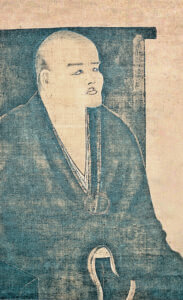

Dogen: A Guide to His Work
This is part of a series of articles on the arc of Zen thought, practice, and history, as presented in The Circle of the Way: A Concise History of Zen from the Buddha to the Modern World. You can start at the beginning of this series or simply explore from here.
Dogen, from the cover of Essential Dogen.
Explore Zen Buddhism: A Reader's Guide to the Great Works
Overview
Chan in China
- The Works of the Chan and Zen Patriarchs
- The Works of Zen in the Tang Dynasty (618-907)
- The Works of Zen in the Song Dynasty (960 - 1279)
- The Great Koan Collections
Zen in Korea
Zen in Japan
> Dogen: A Guide to His Works
- Rinzai Zen
- Hakuin Ekaku: A Reader's Guide
- The Samurai and Zen
- Zen in Japan up to the Meiji Restoration
Additional Resources
- The Heart Sutra: A Reader’s Guide
- Zen in the Modern World (Coming Soon)
- Foundational Sutras and Texts of Zen (Coming Soon)
- Zen and Tea
Dogen (1200–1253) is revered as the founder of the Soto school in Japan, and his influence cannot be overstated. And as mentioned in the previous article, everything changed with him.
The Circle of the Waygives an excellent overview:
Dogen’s oeuvre would be a remarkable achievement just as literature, for its lyric beauty, or as philosophy, for its presentation of Buddhist teachings. But Dogen’s Zen is the Zen of practice, and its deepest value is found in its illumination of the unity of practice and enlightenment.
Shambhala Publications has multiple works by and on Dogen: translations, commentaries, and later commentaries on his output.
Dogen: Japan’s Original Zen Teacher
Although Dogen’s writings have reached wide prominence among contemporary Buddhists and philosophers, there is much that remains enigmatic about his life and writings. In Dogen: Japan’s Original Zen Teacher, respected Dogen scholar and translator Steven Heine offers a nuanced portrait of the master’s historical context, life, and literary output, paying special attention to issues such as:
- The nature of the “great doubt” that motivated Dogen’s religious quest
- The sociopolitical turmoil of Kamakura Japan that led to dynamic innovations in medieval Japanese Buddhism
- The challenges and transformations Dogen experienced during his pivotal time in China
- Key inflection points and unresolved questions regarding Dogen’s teaching career in Japan
- Ongoing controversies in the scholarly interpretations of Dogen’s biography and teachings
Synthesizing a lifetime of research and reflection into an accessible narrative, this new addition to the Lives of the Masters series illuminates thought-provoking perspectives on Dogen’s character and teachings, as well as his relevance to contemporary practitioners.
The Essential Dogen: Writings of the Great Zen Master
This is an excellent place to start: the first book to offer the great master’s incisive wisdom in short selections taken from the whole range of his voluminous works. The pithy and powerful readings, arranged according to theme, provide a perfect introduction to Dogen—and inspire spiritual practice in people of all traditions.
Beyond Thinking: A Guide to Zen Meditation
Kaz Tanahashi translated and edited this collection of Dogen's works on zazen meditation along with Mel Weitsman, Blanche Hartman, Michael Wenger, Norman Fischer, Katherine Thanas, Reb Anderson, and others.
It has many fasciles from the Shōbō Genzō as well as some others including:
- ‘‘Recommending Zazen to All People’’, the ‘‘Fukanzazengi," one of the most revered texts in the Soto School, as it summarizes Dogen’s intention for establishing the Zen teaching in Japan.
- ‘‘On the Endeavor of the Way," or ‘‘Bendowa.’’ highly revered in the Soto School, as it is the most comprehensive elucidation of dharma throughout Dogen’s teaching career.
Rational Zen: The Mind of Dogen Zenji
Rational Zen consists of selections from both the Shobogenzo, Dogen's masterwork which you will read about more below, and the Eihei Koroku, or Universal Book of Eternal Peace which until now has been unavailable in English. The translator Thomas Cleary also provides explanations of the inner meanings of Dogen's writings and sayings—the first commentaries of their kind of English. A compendium of authentic source materials further enhances the reader's insight into Dogen's methods, linking them to the great classical traditions of Buddhism that ultimately flowered in Zen.
The Eihei Koroku mentioned above is comprised of instructions to his monks, informal talks, and the famous Instructions to the Cook or Tenzo Kyokun.
The Tenzo Kyokun, Instructions to the Cook
The Circle of the Way gives an excellent overview of Instructions to the cook, the Tenzo Kyokun, which he wrote in 1237:
While Dogen was still living on the docked ship—it seems he had nowhere else to go—an elderly monk from Ayuwang Monastery, where Dahui Zonggao once taught, boarded in search of Japanese mushrooms. Dogen offered him some tea. The old man talked about his life as a monk and his position as cook at Ayuwang. He had walked thirty-four or thirty-five li (about ten miles), he said, hoping to find Japanese mushrooms—a delicacy—to put into a noodle soup.
The conversations he had with this cook became a formative teaching for Dogen.
The work, The Circle of the Way continues,
is literally a job description for a temple cook. . . . Dogen described cooking as a sacred activity. He advised the cook to handle pots and spoons with reverence and treat each grain of rice with as much care and attention as if it were his own eyeball. “Taking up a vegetable leaf manifests the Buddha’s sixteen-foot golden body,” he wrote. "Take up the sixteen-foot golden body and reveal it as a vegetable leaf. This is the power of functioning freely as the awakening activity which benefits all beings."
How to Cook Your Life: From the Zen Kitchen to Enlightenment
This is a translation of this text, along with a commentary by the Kyoto-based Soto priest Kosho Uchiyama Roshi (1912–1998).
In drawing parallels between preparing meals for the Zen monastery and spiritual training, he reveals far more than simply the rules and manners of the Zen kitchen; he teaches us how to "cook," or refine our lives. In this volume, Uchiyama Roshi undertakes the task of elucidating Dogen's text for the benefit of modern-day readers of Zen. Taken together, his translation and commentary truly constitute a "cookbook for life," one that shows us how to live with an unbiased mind in the midst of our workaday world.
Instructions to the Cook: A Zen Master's Lessons in Living a Life that Matters
An even more contemporary take on this work is Instructions to the Cook: A Zen Master's Lessons in Living a Life That Matters from Bernie Glassman and Rick Fields.
Instructions to the Cook describes the innovative business model Roshi Bernie Glassman developed to revitalize a poverty-stricken section of Yonkers, New York. Using his own story as a base, Glassman shows how social engagement can be used as a spiritual practice to promote both personal and societal transformation.
The Shōbō Genzō: The Treasury of the True Dharma Eye
Undoubtedly Dogen's magnum opus, this a collection of sermons he gave over many years on a wide range of subjects. The works below include the full translation, works that are commentaries on sections of it, or anthologies that include parts of it.
Note that there are several other titles with "Shōbō Genzō" but which are distinct works. The main work discussed in this section is sometimes differentiated from the others by calling it Kana Shōbō Genzō.
Treasury of the True Dharma Eye: Zen Master Dogen's Shobo Genzo
Dogen's collection of essays that form the Treasury of the True Dharma Eye (Shōbō Genzō, in Japanese) is a monumental work, considered to be one of the profoundest expressions of Zen wisdom ever put on paper, and also the most outstanding literary and philosophical work of Japan. Kazuaki Tanahashi and a team of translators that represent a Who’s Who of American Zen have produced a translation of the great work that combines accuracy with a deep understanding of Dogen’s voice and literary gifts.
This volume includes a wealth of materials to aid understanding, including maps, lineage charts, a bibliography, and an exhaustive glossary of names and terms—and, as a bonus, the most renowned of all Dogen’s essays, “Recommending Zazen to All People.”
"A vast, beautiful translation of the master work of the Japanese genius Dogen Zenji. English-speaking practitioners will be indebted to Kaz Tanahashi and his associates for this truly magnificent teaching, an indispensable contribution to Zen letters." —Peter Matthiessen (Muryo Roshi)
"A deeply considered and deeply relevant text. Shambhala’s publication of Kazuaki Tanahashi’s translation of the complete text of Eihei Dogen’s Shōbō Genzō marks a watershed moment for Western Buddhism. With the Tanahashi version, it appears we now have an edition that will receive the sort of attention this great work deserves. Tanahashi’s effort to preserve the particular Japanese difficulty of Dogen’s poetic prose, aided by the excellent work of the poet and Zen teacher Peter Levitt, emphasizes the text’s ambiguity, multiplicity, and resonance of meaning more effectively than other versions." —Norman Fischer, Tricycle
Each Moment Is the Universe: Zen and the Way of Being Time
It's easy to regard time as a commodity—we even speak of “saving” or “spending” it. We often regard it as an enemy, when we feel it slipping away before we’re ready for time to be up. The Zen view of time is radically different than that: time is not something separate from our life; rather, our life is time. Understand this, says Dainin Katagiri Roshi, and you can live fully and freely right where you are in each moment.
Katagiri bases his teaching on Being Time, a text that is part of the Shōbō Genzō to show that time is a creative, dynamic process that continuously produces the universe and everything in it—and that to understand this is to discover a gateway to freedom from the dissatisfactions of everyday life. He guides us in contemplating impermanence, the present moment, and the ungraspable nature of past and future. He discusses time as part of our inner being, made manifest through constant change in ourselves and our surroundings. And these ideas are by no means metaphysical abstractions: they can be directly perceived by any of us through meditation.
Several of the essays of the Shōbō Genzō are the subject of standalone books.
Flowers Fall: A Commentary on Zen Master Dogen's Genjokoan
The Genjokoan, or Actualizing the Fundamental Point, is often considered to be the key text within Dogen's masterwork, Shōbō Genzō. The Genjokoan addresses in terse and poetic language many of the perennial concerns of Zen, focusing particularly on the relationship between practice and realization.
Enlightenment Unfolds: The Essential Teachings of Zen Master Dogen
Enlightenment Unfolds presents many of the incisive and inspiring writings of this seminal figure, focusing on essays from his great life work, Treasury of the True Dharma Eye, as well as poems, talks, and correspondence. As the editor of this volume, Kaz Tanahashi, describes it,
We present this selection of Dogen’s writings in chronological order. We hope the texts in this book illustrate Dogen as a whole person—not only as a seeker, traveler, teacher, and priest who brought Zen from China to Japan, but as a poet, thinker, scholar, administrator, and woodcarver. The text consists of formal and informal talks, essays, monastic rules, journals, poems, and notes, including Dogen’s words as recorded by his disciples. Some were originally written in Chinese, others in Japanese.
Tanahashi has brought together his own translations of Dogen with those of some of the most respected Zen teachers and writers of our own day, including Reb Anderson, Susan Moon, Edward Espe Brown, Norman Fischer, Gil Fronsdal, Blanche Hartman, Jane Hirschfield, Taigen Dan Leighton, Alan Senauke, Katherine Thanas, Mel Weitzman, and Michael Wenger.
Returning to Silence: Zen Practice in Everyday Life
In this book, Dainin Katagiri points to the manifestation of enlightenment right here, right now, in our everyday routine. Genuineness of practice lies in "just living" our lives wholeheartedly. The Zen practice of sitting meditation (zazen) is not a means to an end but is the activity of enlightenment itself. That is why Katagiri Roshi says, "Don't expect enlightenment—just sit down!"
Based on the author's talks to his American students, Returning to Silence contains the basic teachings of the Buddha, with special emphasis on the meaning of faith and on meditation. It also offers a commentary on "The Bodhisattva's Four Methods of Guidance" from Dogen Zenji's Shōbō Genzō, which speaks in depth about the appropriate actions of those who guide others in the practice of the Buddha Way. Throughout these pages, Katagiri Roshi energetically brings to life the message that "Buddha is your daily life."
The Other Shōbō Genzōs
There are two more volumes that include "Shōbō Genzō" in the title. One is the Shōbō Genzō Zuimonki which was writeen by Dogen's student Ejo. The other is the Mana Shobogenzo, sometimes also called the Shinji Shobogenzo, which is a collection of koans. Both these works are profiled below.
Record of Things Heard: From the Treasury of the Eye of the True Teaching, Ejo's Shobogenzo Zuimonki
This Zen classic is a collection of talks Dogen, the founder of the Soto School. They were recorded by Ejo, one of Dogen's first disciples, and later his foremost successor. The talks and stories in this volume were written in the thirteenth-century Japan, a time when Buddhism was undergoing a "dark age" of misinterpretation and corruption. It was in this atmosphere that Dogen attempted to reassert the true essence of the Buddhist teachings and to affirm "the mind of the Way" and the doctrine of selflessness. Dogen emphasizes the disciplinary aspect of Zen: meditation practice is presented here as the backbone without which Buddhism could not exist.
The stories in this volume are often humorous and paradoxical, relating the Buddhist teachings by means of example. Commonly in the Zen tradition, discussions between teacher and student and the telling of tales are used to point to a greater truth, which mere theory could never explain.
Dogen relates interesting stories of his travels in China, where the inspiration he found lacking in Japanese Buddhism was flourishing in the Ch'an school of Chinese Buddhism.
To confuse things a bit, there are several other texts with Shōbō Genzō in their title which are in fact separate works.
The True Dharma Eye: Zen Master Dogen's Three Hundred Koans
This presents readers with a uniquely contemporary perspective on his profound teachings and their relevance for modern Western practitioners of Zen. Following the traditional format for koan collections, John Daido Loori has added his own commentary and accompanying verse for each of Dogen’s koans. Zen students and scholars will find The True Dharma Eye to be a source of deep insight into the mind of one of the world’s greatest religious thinkers, as well as the practice of koan study itself.
Other Works
Here are a few other works by or focusing on Dogen.
Minding Mind: A Course in Basic Meditation
Among the seven meditation manuals included here is A Generally Recommended Mode of Sitting Meditation by Dogen.
One of the main concerns of Dogen’s teaching activity was to alert people to the shortcomings and dangers of incomplete Zen meditation and partial Zen experience. This manual, one of Dogen’s first written works, reflects this concern and outlines an approach to its resolution.
Another manual in this collection is Absorption in the Treasury of Light, written by Dogen's main student, Ejo (1198–1282). Born into an ancient noble family, Ejo became a Buddhist monk at the age of eighteen. After studying Tendai Buddhism, he concentrated on Pure Land Buddhism, then turned to Zen. Eventually he became an apprentice of Zen master Dogen, who soon appointed Ejo his teaching assistant and spiritual successor.
Absorption in the Treasury of Light is Ejo’s own composition. Reflecting Ejo’s background in the esoteric branch of Tendai Buddhism as well as his classical Zen studies, this work shows how to focus on the so-called Dharmakaya, or Reality Body teaching of Buddhism, underlying a wide variety of symbolic expressions. This type of meditation, using scriptural extracts, poetry, and Zen koans, or teaching stories, to register a specific level of consciousness, is called sanzen. There is a great deal of Zen literature deriving from centuries of sanzen, among which Ejo’s Absorption in the Treasury of Light represents a very unusual blend of complexity and simplicity, depth and accessibility.
Being Upright: Zen Meditation and the Bodhisattva Precepts
Dogen authored the Kyojukaimon, or Essay on Teaching and Conferring the Precepts. Being Upright is a short commentary by Reb Anderson on this text which is very important in the Soto Zen lineage and is recited as part of the monthly confession ceremony at the San Francisco Zen Center and its sister centers.
This is the teaching of unsurpassed complete perfect awakening,
and the path of practicing and being practiced.
—Dogen, Essay on Teaching and Conferring the Precepts

